1lumen selects and reviews products personally. We may earn affiliate commissions through our links, which help support our testing.
NEXTORCH Saint Torch 30C review
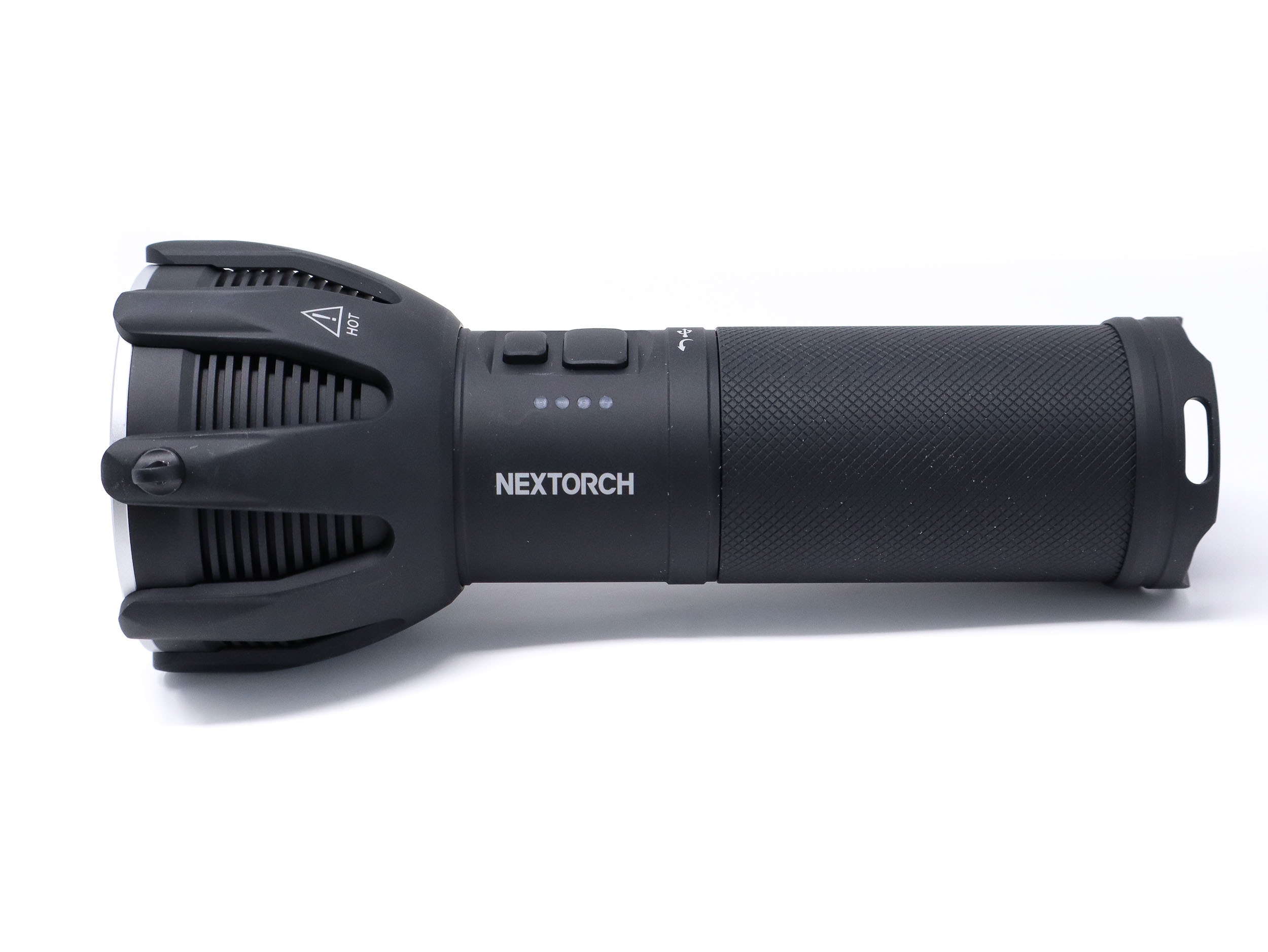
NEXTORCH Saint Torch 30C specs
| Brand & Model | NEXTORCH Saint Torch 30C |
|---|---|
| Flashlight category | High Output Searchlight |
| LED | 3*unknown |
| Max. output | 15,000 lumens |
| Max. beam distance | 515 meters |
| Max. beam intensity | 66,306 cd |
| Battery config. | 3*21700 Battery Pack |
| Onboard charging | USB C |
| Main modes | 5 |
| Blinkies | Strobe, S.O.S |
| Waterproof | IPX7 |
| Review publication date | January 2024 |
Review intro:
If you’ve ever looked for a tactical flashlight on the interweb, you probably got about 41,235,375,480 hits, with buzzwords like, military-grade, indestructible, maximum output, Spec OPs and Navy SEAL approved!, or 160,000 Lumens. That’s all fine, and feel free to buy them, but you’d be sorting through a lot of rubbish before you found a true, duty-rated or tactical-use flashlight (I promise, Navy SEALs and Delta Force don’t use zoomies they bought off the jungle site).
In the hunt for a real tactical light, there’s really only a handful of companies that make something a professional user would want on their duty belt or MOLLE kit, one that turns on every time when needed, and they could depend on to possibly save their life.
Of those, NEXTORCH isn’t one I have much experience with, but they’re one of the bigger operators in this segment. Hailing from Tennessee as NEXTORCH Industries Co. LTD, they have offices and dealer affiliates worldwide, and maintain bonafide contracts with agencies and governments with an absolute ton of duty and tactical products for just about every application. I mean, tons: Body-worn, helmet-mounted, handhelds, ballistic shield mounted lights, WMLs (long-gun and pistol lights), batons, illuminators for NVGs and IR, traffic wands, holsters and pouches, and on and on. There’s even options for search and rescue tools.
How do I know? Well, NEXTORCH sent out their newest addition to their Saint Torch 30 series for review. This is the Saint Torch 30C, a high output triple LED search light. It’s got some great features like 45W bidirectional charging, dual switch UI, and great output with good beam distance. This is my first exposure to NEXTORCH, and expectations are pretty high. It’s coming up against a lot of stiff-lipped competition, so let’s see.
Package quality.
The Saint Torch 30C is a high-end light, and comes in an appropriate package: A standard box with the main bits in a reusable nylon carry bag.
- Saint Torch 30C
- Battery pack (the flashlight body)
- Shoulder harness
- USB C to C charging cable
- User manual
- 45W USB C wall charger
- Carry bag
This is a complete package with all you need to get going as it should be, including the appropriate 45W charger and a type C to type C cable (hint, hint, Fenix). The carry bag is a nice addition since you can transport the light without damaging it and the accessories can also tag along. The bag is nice and seems well-made and sturdy enough. The light is stored in the upper part of the bag with the accessories underneath under a Velcro-secured compartment. The battery was unscrewed from the tube a bit for lockout, and it was sitting at 11.5 volts for storage.
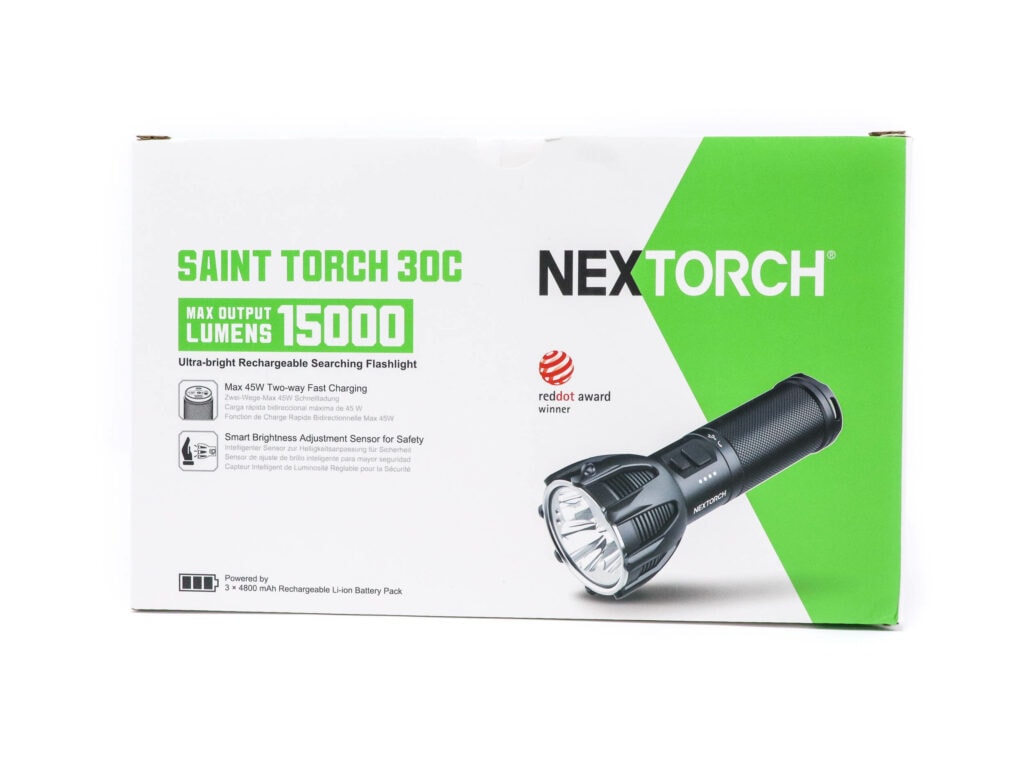
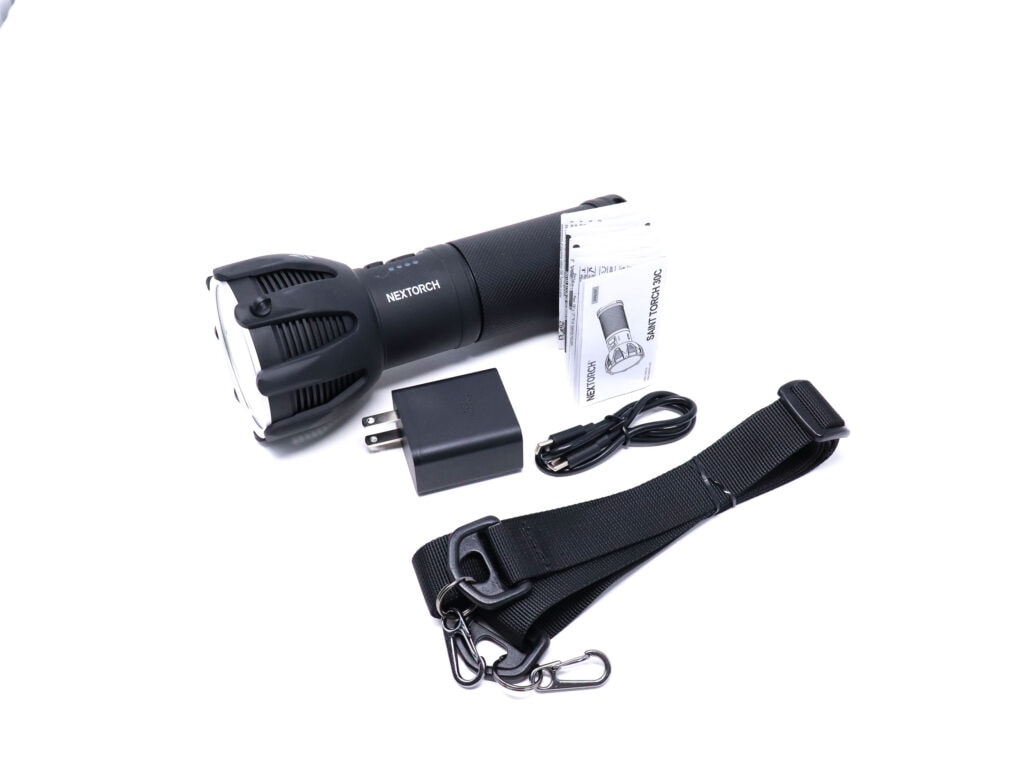


Flashlight in use, Build Quality, and Warranty
The NEXTORCH Saint Torch 30C is a high output searchlight that joins the ranks of the Fenix LR, Wuben A, Nitecore’s TM, and Olight’s Marauder series. They’re good for long-distance searching, surveying, or area lighting and not much else. First impressions: The design is really interesting, with a flower-like shroud covering a finely finned head. NEXTORCH calls it a ‘lotus flower’ and it really does look like a flower.
I like it!
I think some other industry buffs like it also since (per the box), it appears to have won the RedDot Award at some point (like the Fenix LR60R in 2023 did). While the 30C didn’t come with a handle, NEXTORCH sells the HM30 as an add-on. However, even without the handle, the light is delightfully easy to handle and maneuver. It’s also comparatively lightweight at under 1 kg. and nicely balanced. By comparison, the LR80R and LR60R are much heavier and bulkier.
The tube is large, but not overly so. It’s covered with really grippy diamond-cut knurling, so handling is easy. If you prefer, the included shoulder harness attaches to a mount on the bezel and slots on the tail. There’s a couple of e-switches up front: A smaller multifunction momentary switch and a larger mode selection switch. This is meant to differentiate functions by feel.
The switches are easy to find and access in the over and underhand position. These switches have metal covers for durability (no rubber to wear out) and have good feel with positive clicks and good feedback, which is important for gloved hands. There’s 4 LED indicators on the left side of the switches for battery and charge state.
The tube is also the battery pack, and it unscrews to reveal the charging I/O consisting of a USB A port and a USB type C port, along with an indicator for charging and the power bank function. Oddly, there’s no threaded socket to accept a tripod mount, but the optional handle has one. Tail standing is no problem.
On to quality.
This is my first go with NEXTORCH, and so far so good. The light feels very high quality and solidly built as I expect for a professional-use lighting tool. The price reflects this. We all know searchlights aren’t cheap, and neither is the 30C, as it’s coming in around $375 US. Not cheap, but it’s cheaper than the Fenix LR60 and 80Rs.
The 30C is milled from high grade aluminum alloy. Machining, fit, and finish are exquisite as I expect at this price. The edges are all chamfered and smoothed, and the silkscreen text and laser-etched graphics are crisp and sharp with nice contrast against the finish. The finish is type III HA hard anodizing in a muted, semi-matte finish. It’s superbly grippy and actually rubs off certain materials. Moreover, it seems thickly applied and I’d bet it’s close to the true MIL-A-8625 which is 2-2.5 mils thick.
The 30C cannot be disassembled, and only the tube/battery is removable. The driver has a probably 0.75 inch long gold plated probe that interfaces with a gold-plated receptacle in the center of the battery pack. I don’t think this light really needs springs, and NEXTORCH did a good job designing these connections to be shock resistant and low-resistance since they act like XT60 connectors. The threads for the tube are pretty fine, triangular cut units, and seem a bit light-duty for this application.
Moreover, I found myself being intentional/careful when screwing on the tube to keep things from cross-threading, but that’s less of an issue here because the tube needs just 1-⅕ turn to seat to the head! With a glued up body and single o-ring sealing the tube, NEXTORCH gives the 30C an IPX7 rating. I would like to see an IP68 rating here instead of the ‘X7’ which is a generic rating. Still, NEXTORCH says it’s good for 1 meter drops and immersion, and I believe it.
For the warranty, NEXTORCH is comparable to the competition. From NEXTORCH: HASSLE-FREE WARRANTY
NEXTORCH® guarantees our products to be free from any defects in workmanship and/or materials for 5 years. If products are found to be defective we will replace them at our sole discretion. NEXTORCH® reserves the right to replace an obsolete product with current production.
NEXTORCH® provides free maintenance service for products with quality problems under normal use within 5 years since the purchase date. Please note, quality problems do not include regular wear and tear or things like the lamp burning out, batteries draining, or switches wearing out. Nor does it cover damages resulting from abnormal use, abuse, neglect, battery damage, use of non-NEXTORCH® brand batteries or accessories, unauthorized modifications or repairs.
The above warranty excludes accessories, while chargers and rechargeable batteries are covered within one year. In the event that any issues with a NEXTORCH® product are not covered under this warranty, NEXTORCH® can arrange to have the product repaired or replaced for a reasonable fee.
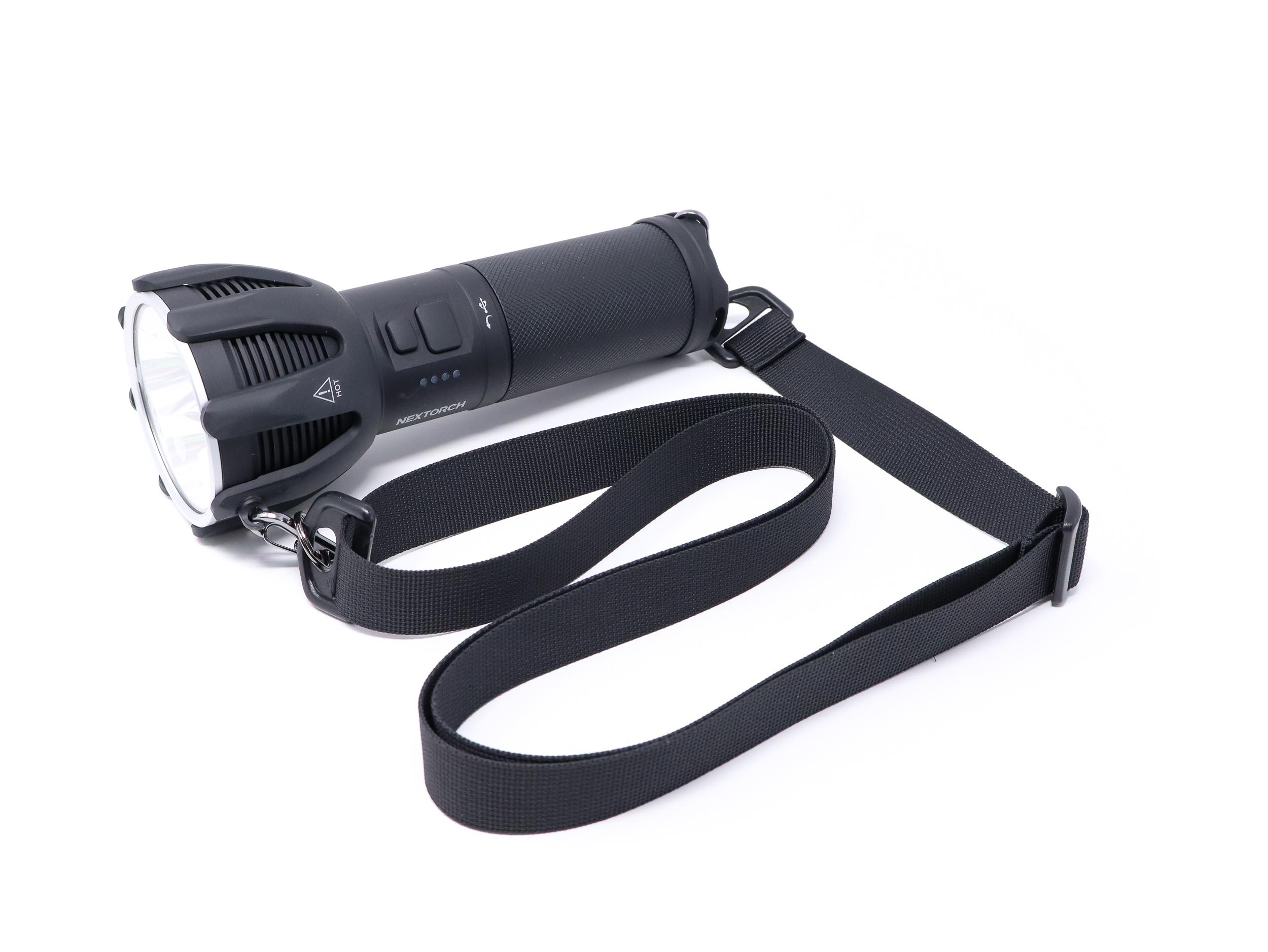
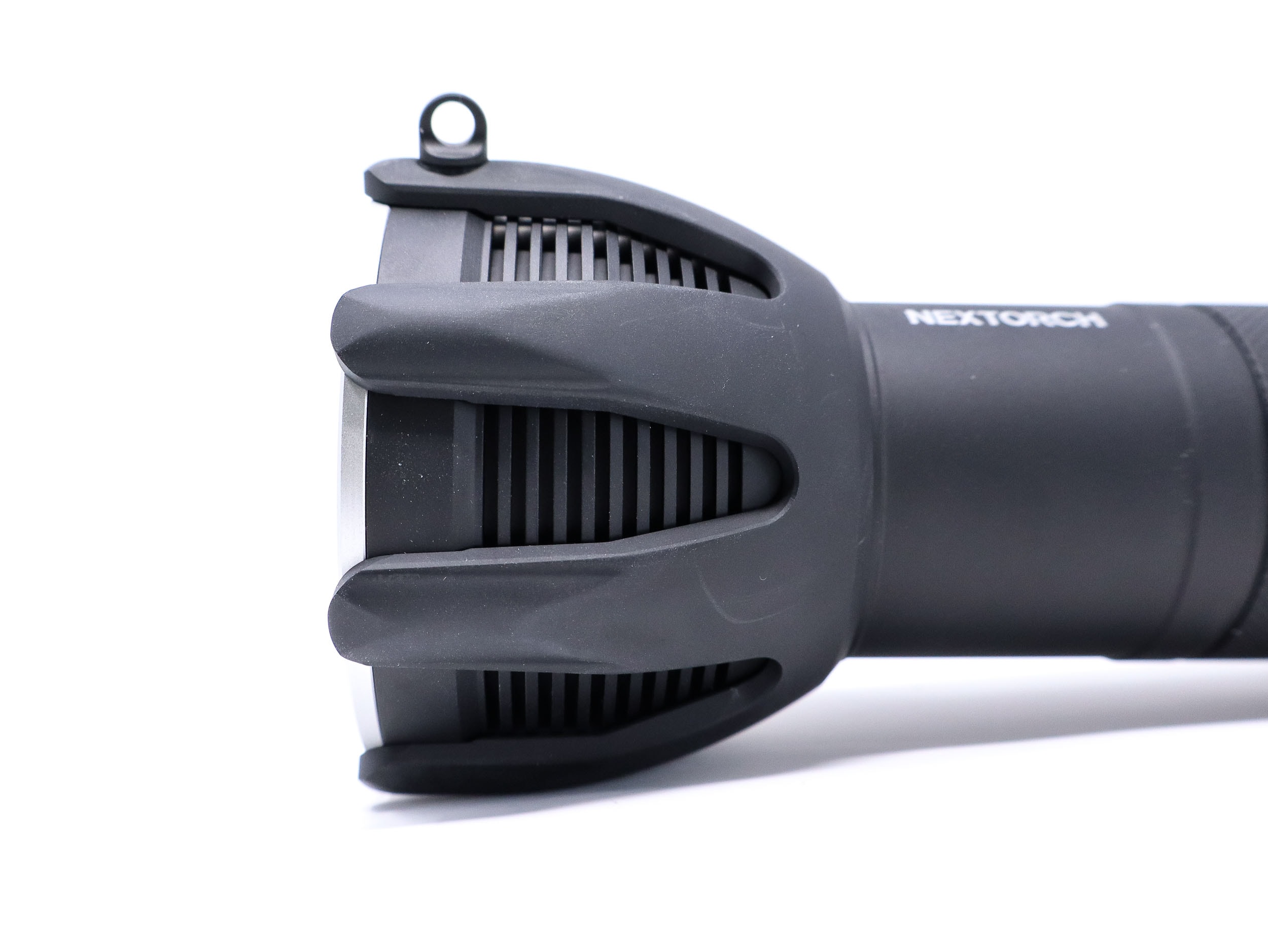

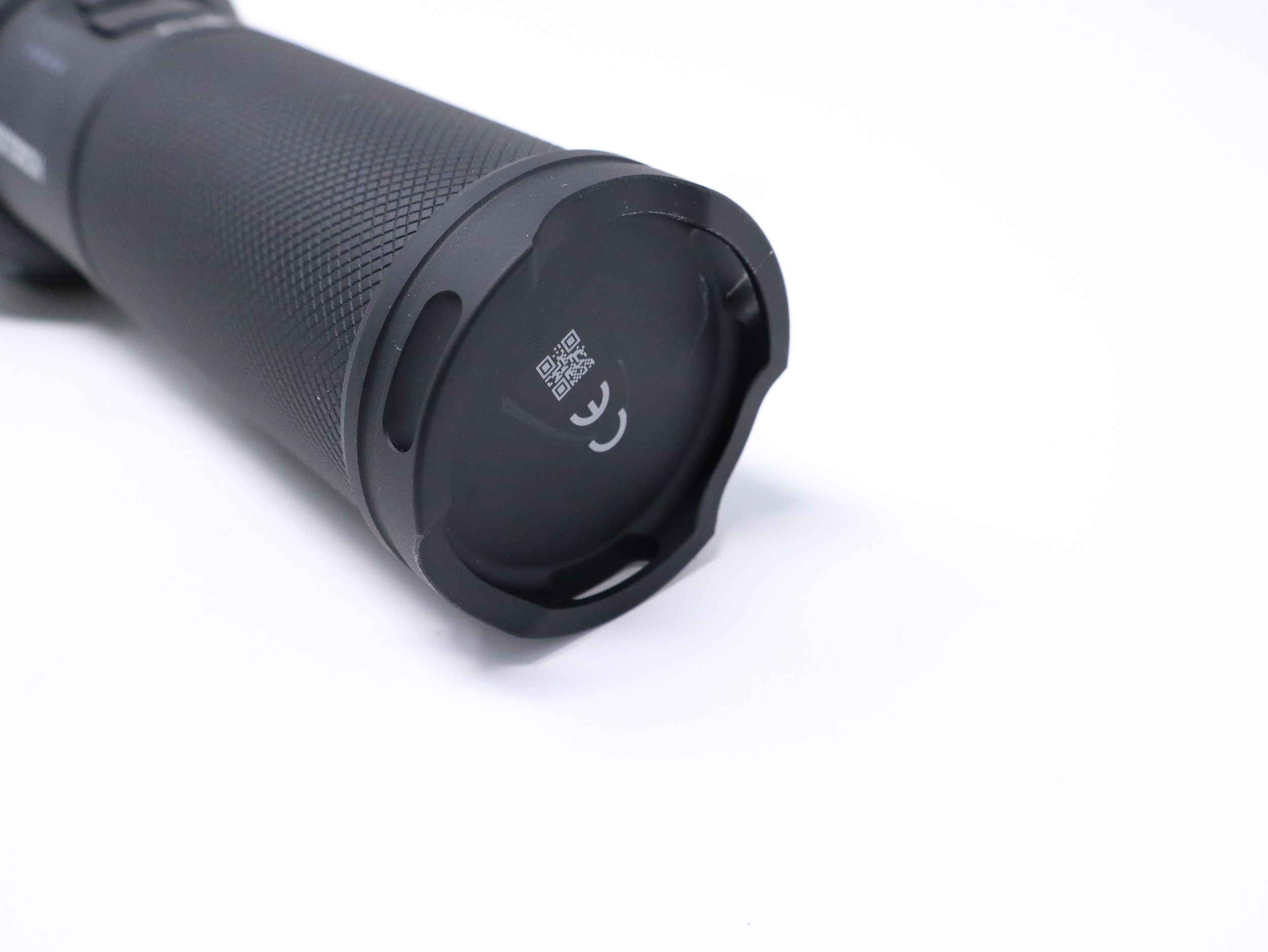
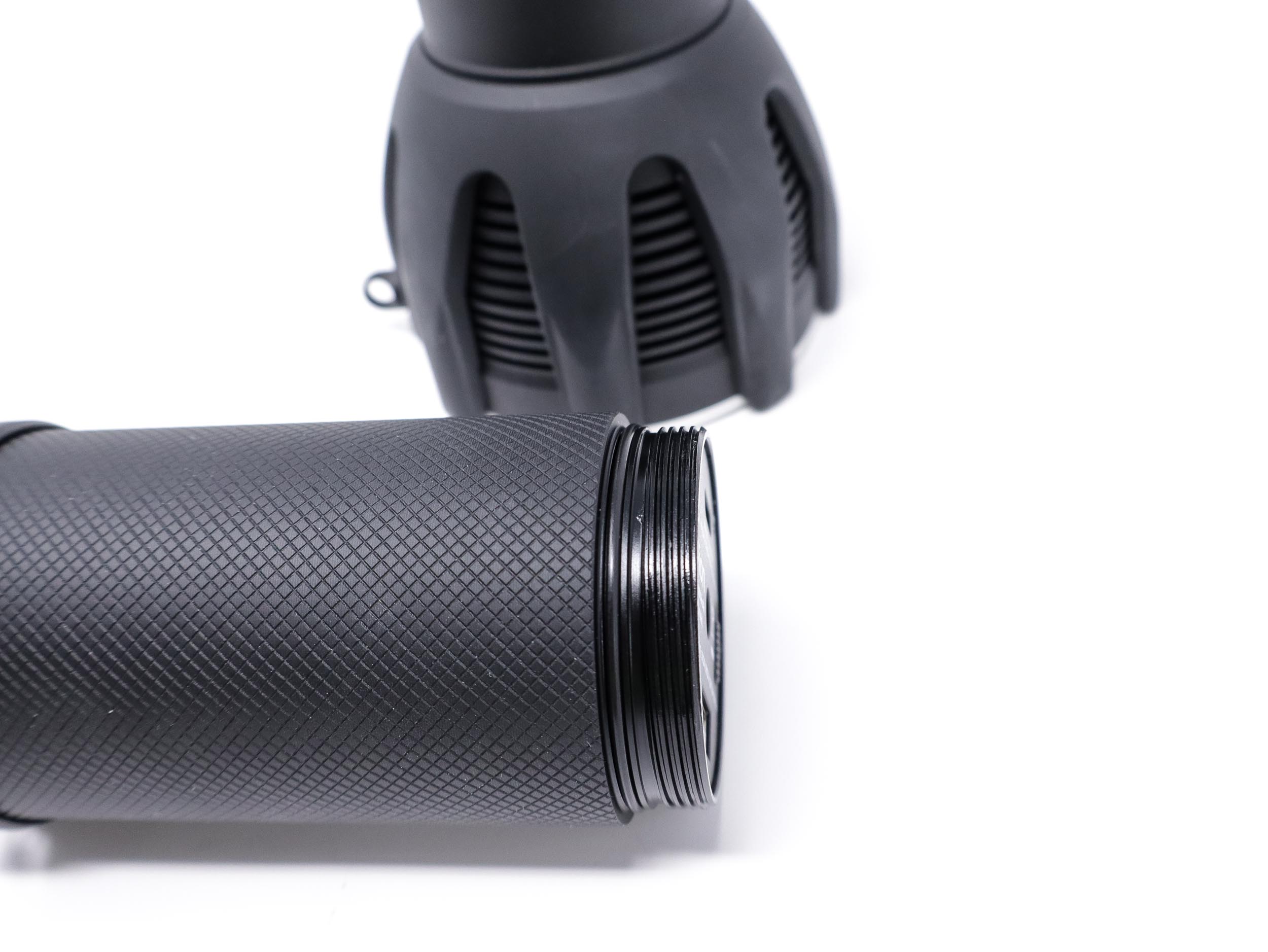
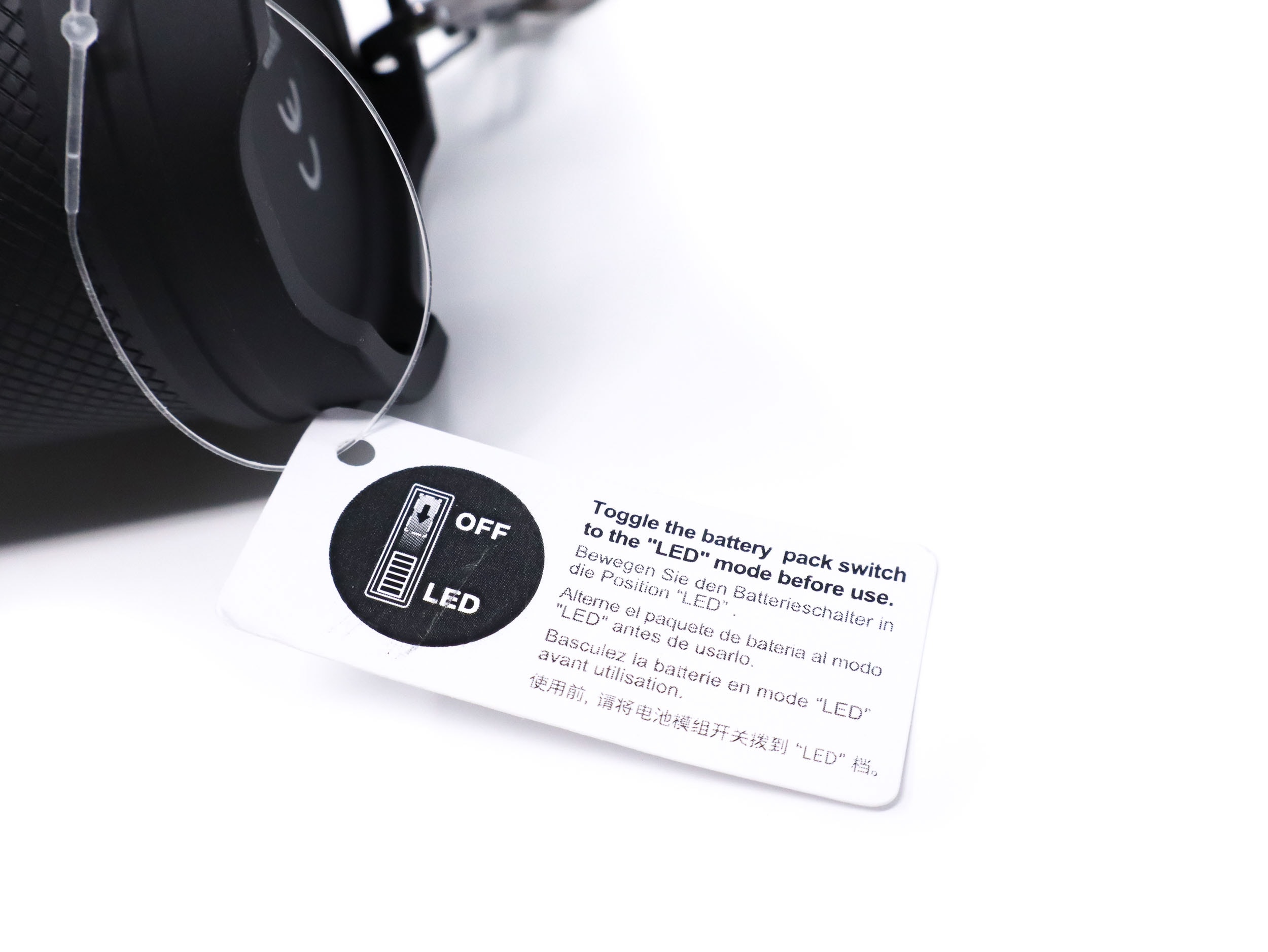
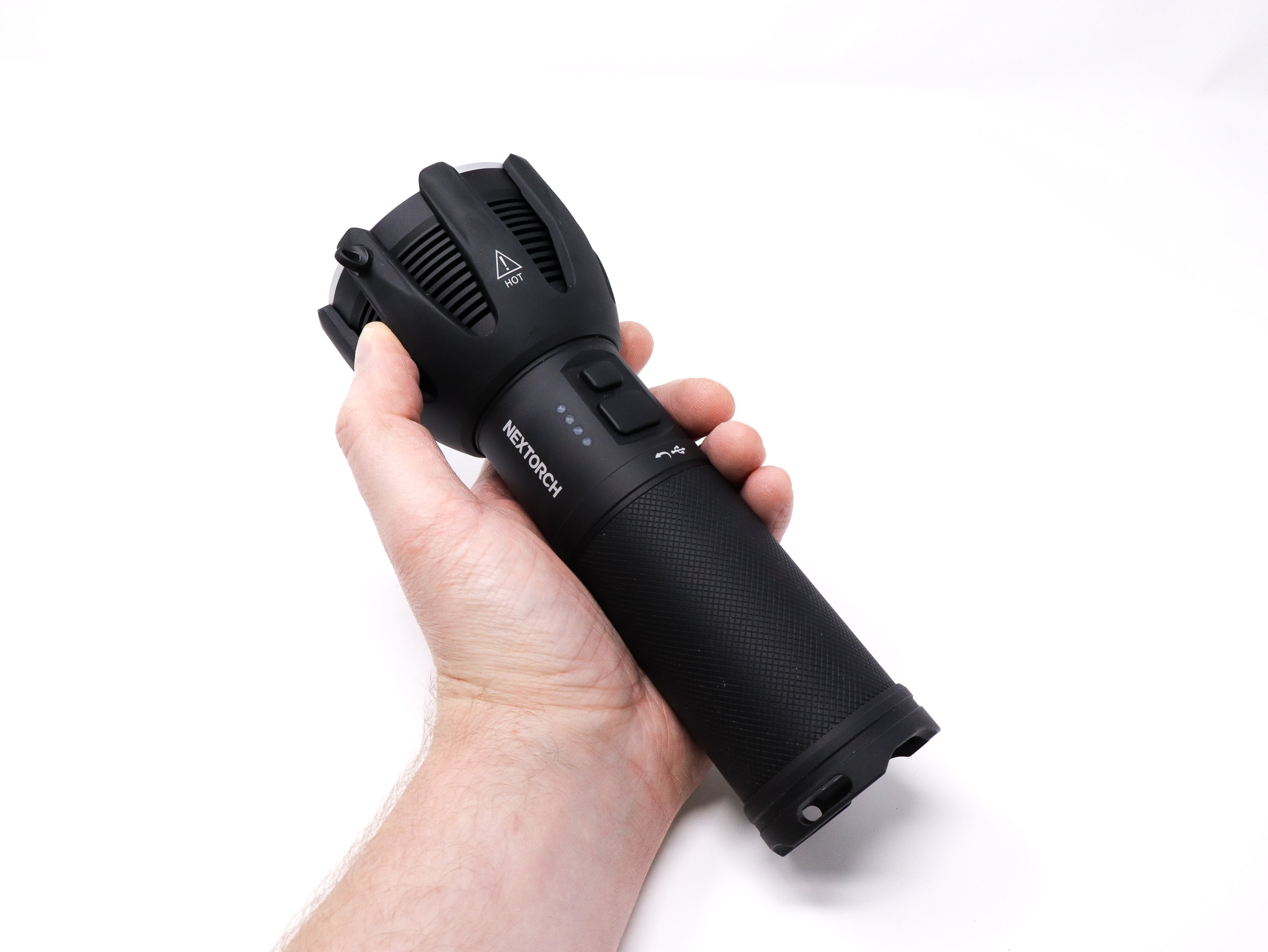
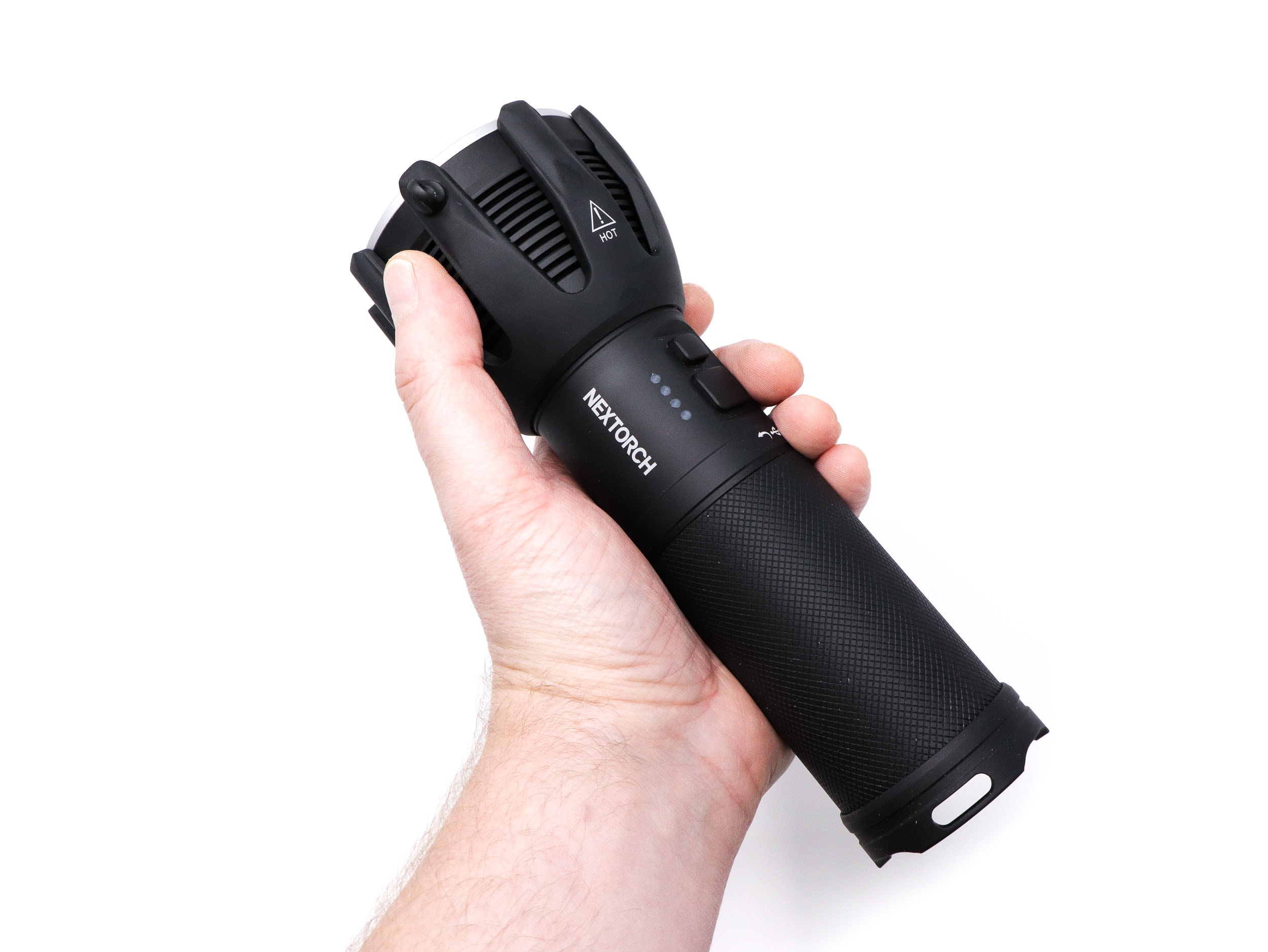
LED, Lens, Bezel, Beam, and Reflector
Here’s where the 30C strays from the competition a bit. For the three LEDs, instead of enlisting a Cree or a bunch of SSTxx LEDs for the 15,000 Lumen output, NEXTORCH seems to have raided the Chinese marketplace for the LEDs. What’d they come up with? Peeking down the triple SMO reflector array gives some clues, but nothing conclusive and I can only guestimate that these are San’an Optoelectronics products.
The three LEDs look like domed ‘P90’ and ‘P120’ muti-die LEDs we see on Aliexpress. Unlike those, the construction follows the SFx domeless LEDs, with a non-homogenous LES made up of individual dies. The footprint looks to be 7070 like the Cree XHP70.
There’s no visible bond wires, and I can’t verify the output voltage, but I’m thinking the LES is arranged in series/parallel since the battery puts out 12 volts. This will lower the input current and keep the temperatures down during extended runtimes at high output. The tint is cool white and low CRI, which is totally fine for this application.
The bezel is matte finish and made from either stainless steel or aluminum (I’m leaning towards aluminum). The AR coated (light purple) mineral glass lens is protected by the bezel and the protruding ‘petals’ of the head shroud. The beam out of the triple SMO reflector is perfect for a searchlight: Wide, bright spill with lots of side illumination and a visibly brighter center spot for good beam distance. It does have the characteristic tint shift and corona seen on domed Cree XHP products. It’s not nearly as bad here, but the bright spill transitions to a yellowish corona and then a bright spot.
Spectral measurements:
I used the Opple Lightmaster Pro to measure the flashlight at 1 meter from the sensor. The tint is cool white and the duv shifts positive, but it does turn bright white at higher output.
| Mode: | CCT: | CRI Ra: | duv |
|---|---|---|---|
| Turbo | 6070 | 67.3 | 0.0052 |
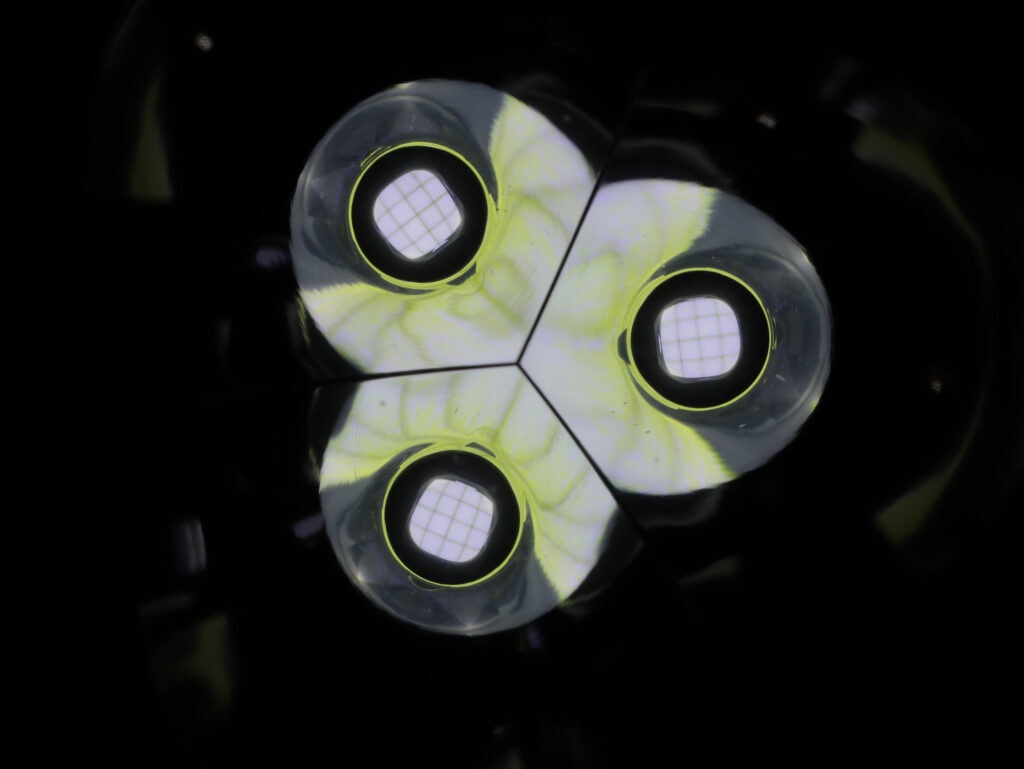
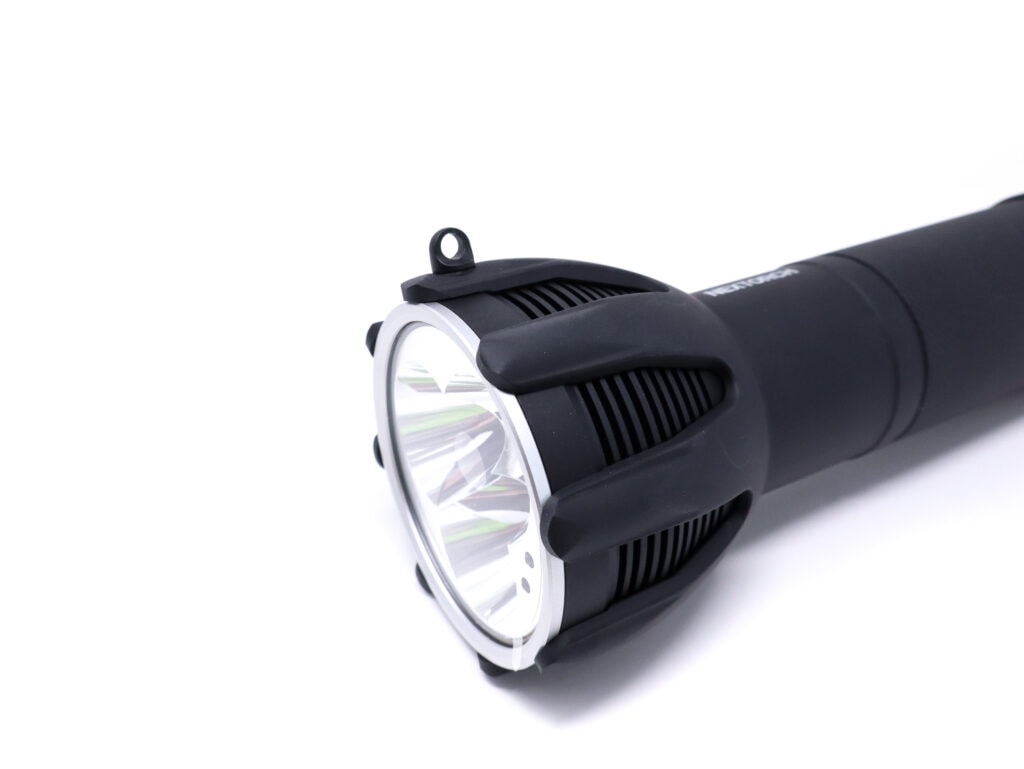

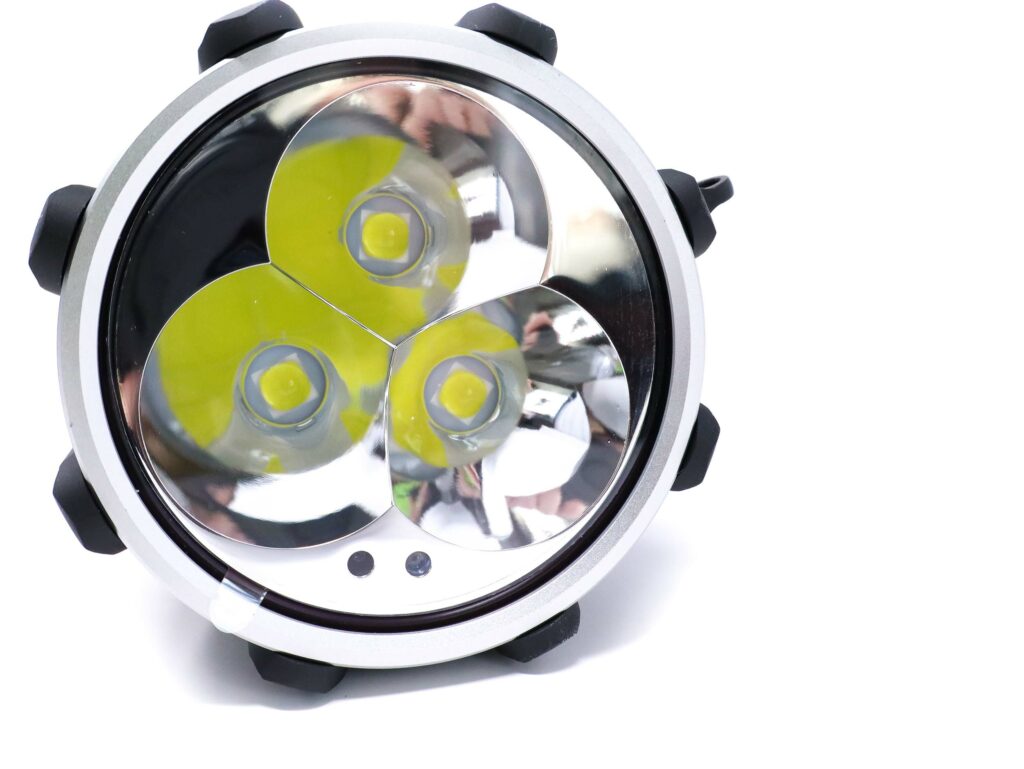
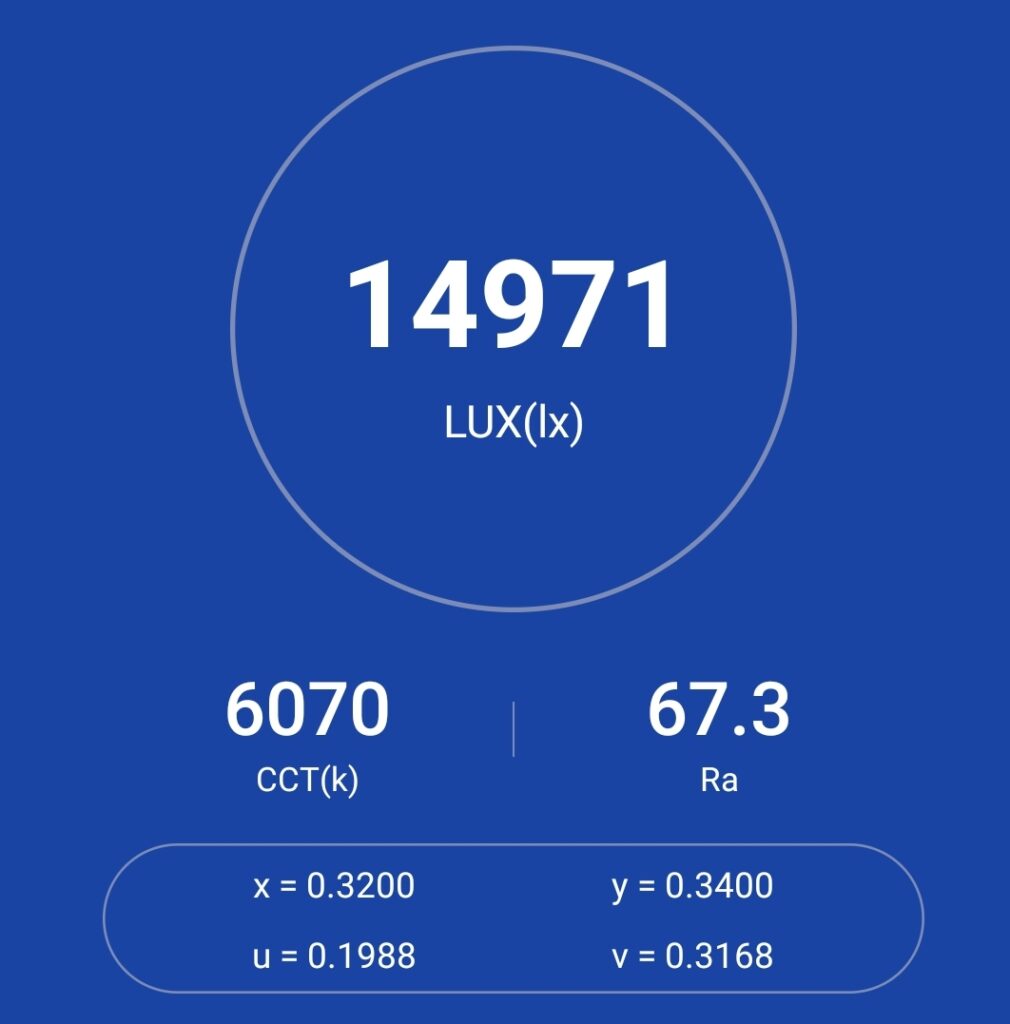

Dimensions and its competition
Dimensions:
| NEXTORCH Saint Torch 30C | Millimeters | Inches |
|---|---|---|
| Length | 202 mm | 8 |
| Head diameter | 84 mm | 3.3 |
| Body diameter | 50 mm | 2 |
Dimensions are rounded to the nearest millimeter, and to the nearest tenth of an Inch.
Weight:
| NEXTORCH Saint Torch 30C | Weight in grams | Weight in oz |
|---|---|---|
| With battery | 798 g | 28 oz |
| Without battery (head) | 454 g | 16 oz |
Weight is rounded to the nearest gram, and to the nearest tenth of an Oz.
The Saint Torch 30C is comparatively lightweight for a searchlight!
Flashlight size comparison with its competition:
Group 1 left to right: Fenix LR80R, NEXTORCH Saint Torch 30C, Fenix LR60R
Group 2 left to right: Thrunite TN50, Wurkkos TS32, NEXTORCH Saint Torch 30C, Lumintop Thanos 23, Amutorch DM80
Group 3 Reflectors left to right: Haikelite HK90, NEXTORCH Saint Torch 30C, Thrunite TN50, Lumintop Thanos 23
Group 4 back row left to right: NEXTORCH Saint Torch 30C, Fenix LR60R, Fenix LR80R, Haikelite HK90, Haikelite HT90. Front row left to right: Thrunite TN50, Lumintop Thanos 23, Wurkkos TS32, Lumintop Mach, Amutorch DM80
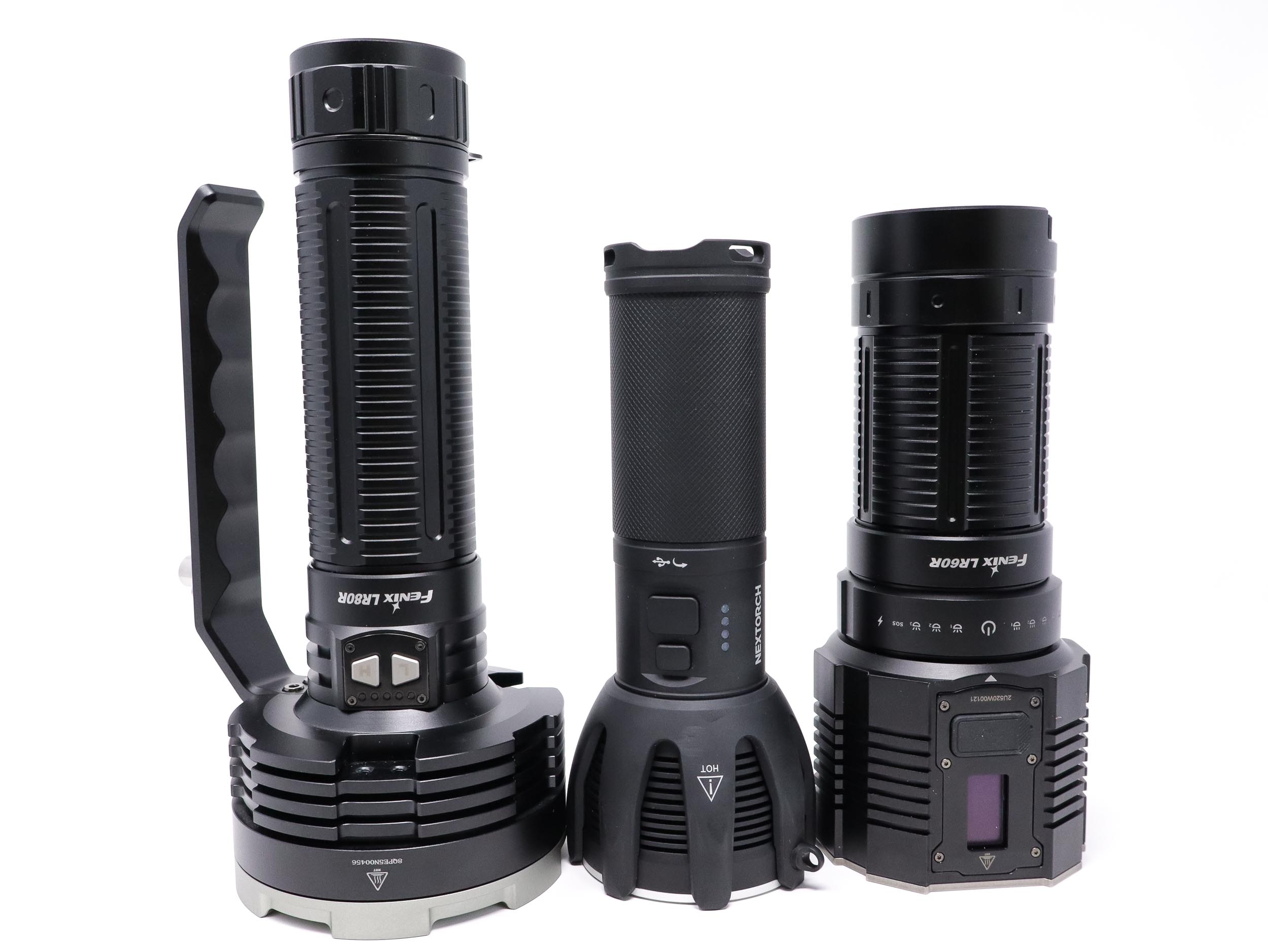
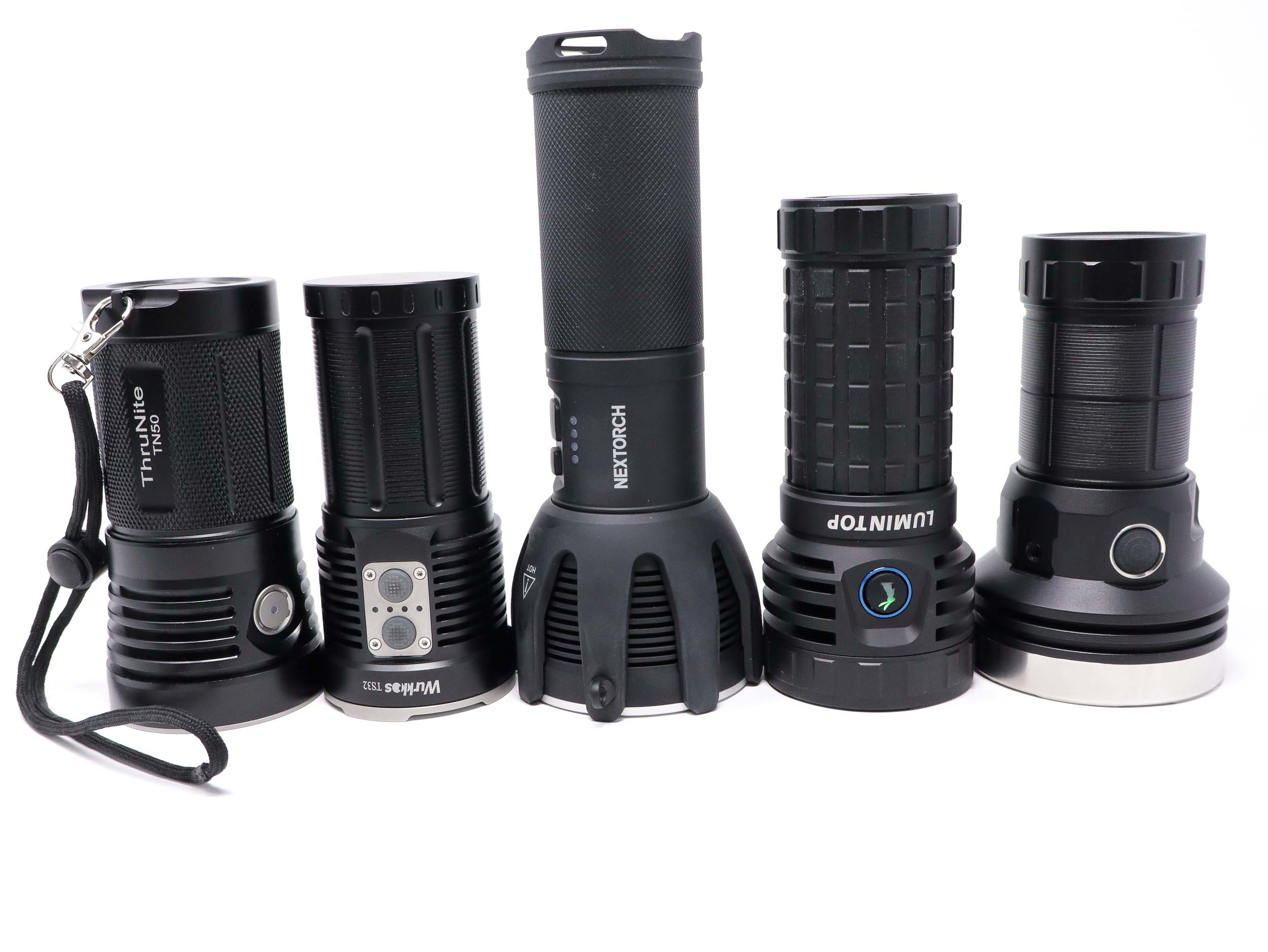


NEXTORCH Saint Torch 30C UI: User Interface and Driver
The driver is not mentioned, but we’re getting 12.6 volts from the 3S battery pack. This could be some kind of a boost driver or buck driver?
The UI is a two switch affair and it’s very simple to use, but it is a bit quirky. The smaller switch is a momentary switch for what NEXTORCH calls ‘one step turbo’ and that’s what it does. It only turns on momentary Turbo (or high mode?).
The larger switch is a latching type forward switch and it’s for on/off and mode changes. The UI itself is pretty straightforward with 5 modes plus Turbo and a Strobe and S.O.S. The light always starts on High, and annoyingly, Strobe is part of the regular mode group. There’s also a proximity/dimmer sensor at about the 8 o’clock position on the reflector face for the auto-dimmer feature that dims the output when an object within about 12 inches is detected. Thankfully, it can be disabled.
Available modes:
- Eco, Low, Medium, High, Momentary Turbo
Available blinky modes:
- Strobe, S.O.S.
From OFF:
- Tap the One Step Turbo switch: Momentary Turbo
- Tap mode switch: Momentary on in High mode
- Fully click mode switch: Constant on in High mode
From ON:
- Click the One Step Turbo switch: Momentary Turbo
- Tap the mode switch (more like ¼ press?): Switches modes H-M-L-Eco-Strobe-H
- Fully click the mode switch: Turns off
- Press and hold the mode switch in Eco mode for +10 seconds: Disables the proximity sensor
Mode memory:
- None, will always start in High
Shortcuts:
- Press and hold the mode switch from ON for +3 seconds for S.O.S.
Low voltage warning/protection:
- Yes. There is a row of 4 LED indicators below the switches to show battery state when turned on. NEXTORCH doesn’t list % of battery remaining, so best guess: 4 LEDs: 100%, 1 red flashing LED for critical battery level.
Strobe/blinkies
- Strobe, S.O.S.
Lock-out mode:
- Double-click the One Step Turbo switch for electronic lockout from on or off. The LED indicators flash to acknowledge the lockout, and when locked and the button(s) are pressed, the 4th LED turns on red to show lockout. Double-click to deactivate.
Disabling the proximity sensor on the NEXTORCH ST31C:
- The proximity sensor can be disabled from the UI.
- From Eco mode, press the switch about ¼ press and hold it for about 11 seconds.
- The light will cycle to S.O.S. mode, then about 2 seconds later, it will turn off and the 1st and 4th LED indicators will turn on to indicate the sensor has been deactivated.
- Note this only works once. When the light is turned off, the sensor is re-enabled.
PWM
- None visible by eye
Additional/summary info on the UI:
- This is a pretty straightforward UI for a high power flashlight, but honestly I think NEXTORCH can do better. I like the simplicity and ease-of-use here, since anyone can pick this up and get to work without much (if any) instruction.
- The mode spacing is good as well, and I like that the auto-dimmer can be disabled easily. However, I don’t like that it’s only disabled for one use, and turning the light off re-enables it. I also didn’t like that Strobe is part of the main mode group instead of being hidden like S.O.S.
- While not the end of the world, and appropriate for this use-case, I’d rather not have a light default to starting in High mode, especially when it’s 10,000 Lumens. I also miss having mode memory, since I don’t like turning the light off in Low and having it turn back on in High. NEXTORCH says this has intelligent temperature regulation, and I believe it since the light has excellent thermal regulation.
NEXTORCH Saint Torch 30C Charging and batteries
Like most searchlights, the NEXTORCH Saint Torch 30C utilizes a battery pack instead of removable batteries. Company lawyers and insurance adjusters like these since it’s easier to and safer than loose batteries because packs can be outfitted with a BMS for added protection for the batteries (and end user).
The Saint Torch 30C battery pack is made up of (per NEXTORCH) 3 of their 4800 mAh 21700 li-ion batteries arranged in series for a total of 12.6 volts fully charged (10.8 nominal). The battery pack has a USB type C input and a USB A output. The USB C is bidirectional, accepting QC2 and QC3 with PD up to 20V 2.5A 45 watts input, or the same 20V 2.5A, 5V 3A, 9V 2A, and 12V 1.5A for the power bank output.
The type A port supports up to 18W output. I threw my Ruideng AT35 USB tester on the type A port and my Hidance universal tester on the type C input/output. For the type C input charging off the Fenix LR60R, I saw a max of 20.3V 2.42A (around 47W) and around 9 volts, 2 amps for the type USB A. Charging the LR60R on the power bank type C, I saw the same 20 volts, 2.3 amps, and on the type A USB charging the Wurkkos TS30S I saw around 10 watts.
| Charge type | Fits | No fit | Charge time |
|---|---|---|---|
| USB type C, USB type A (for power bank only) | Included battery pack only | Everything | Around 90 minutes |
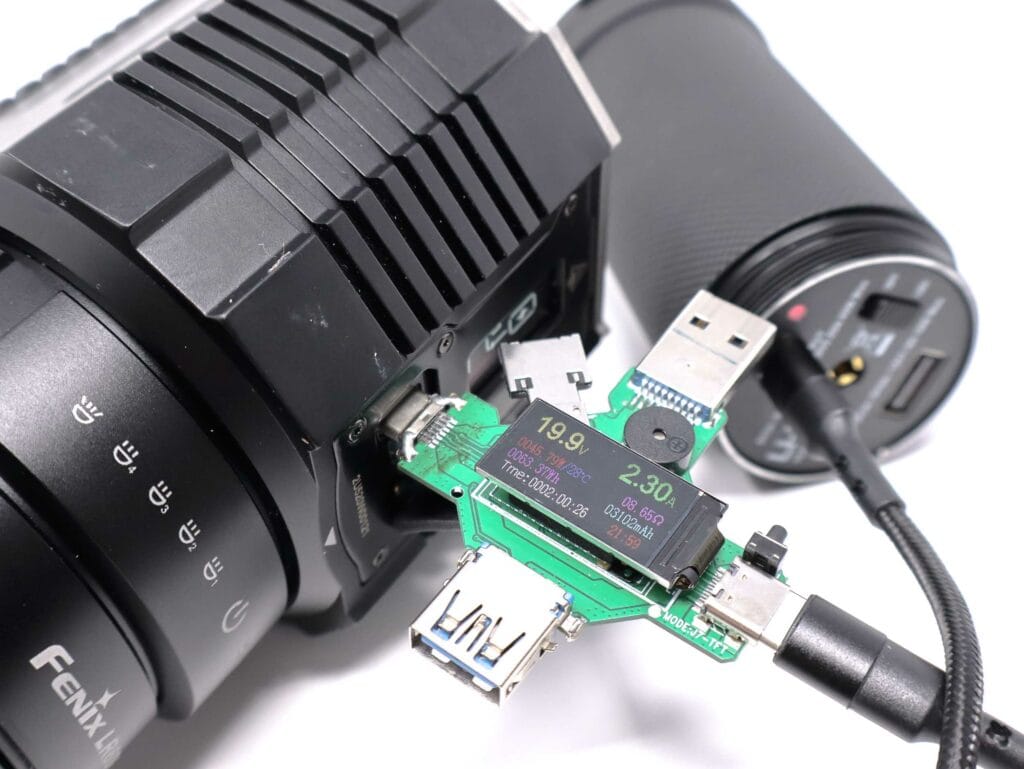
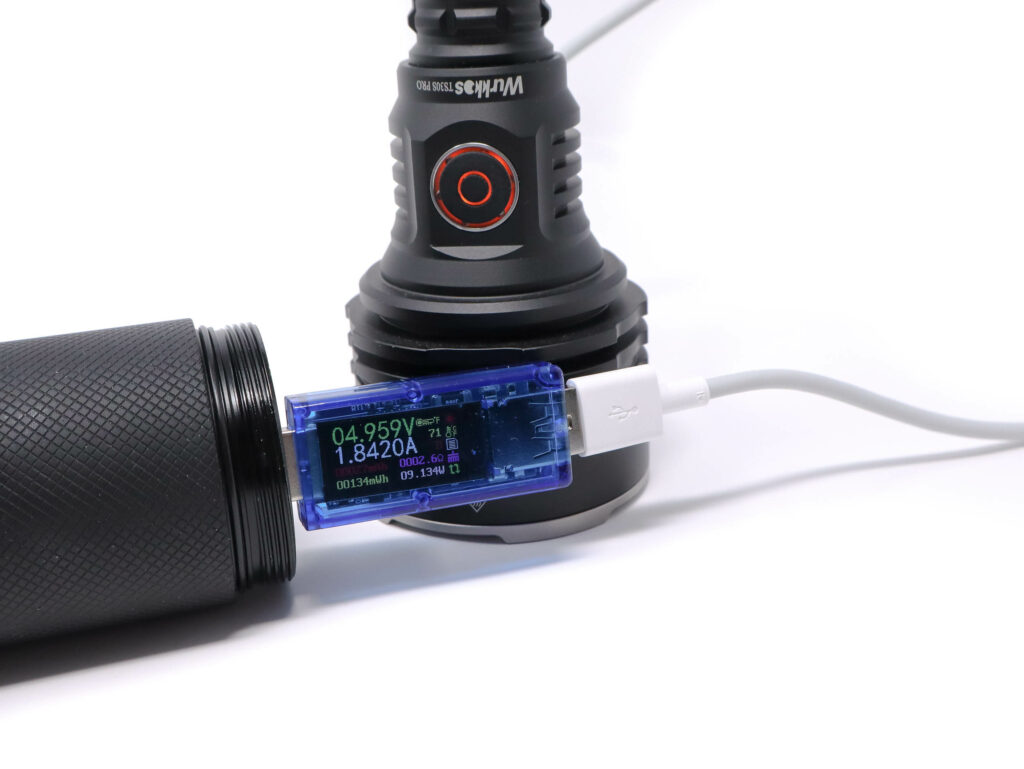


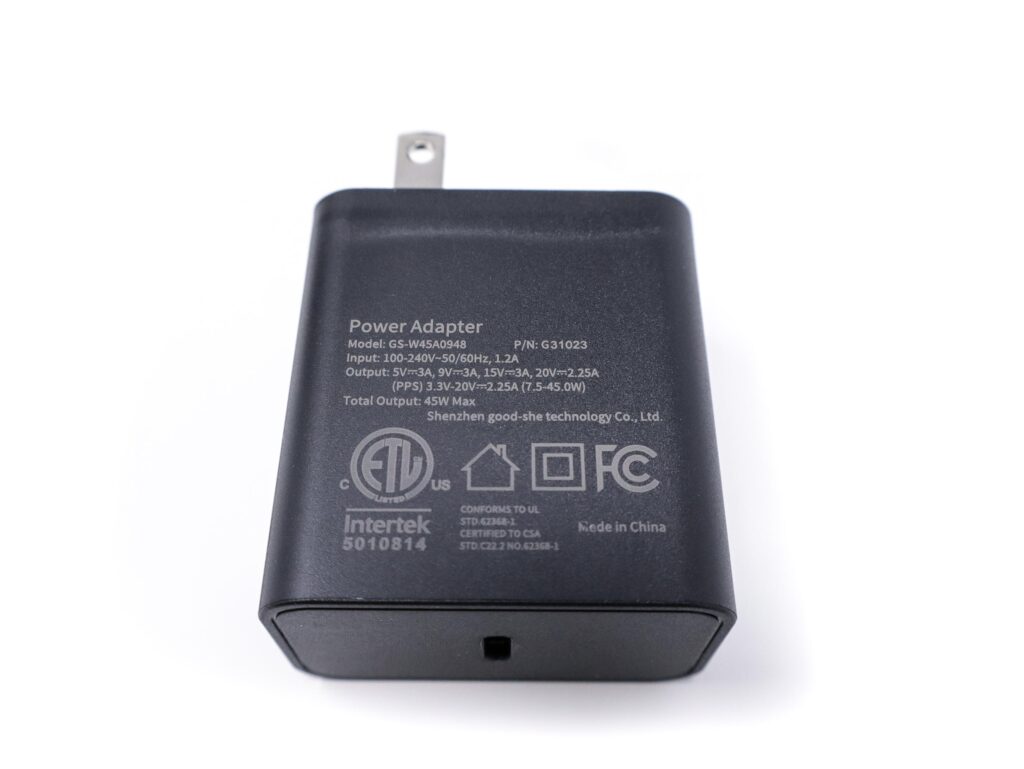
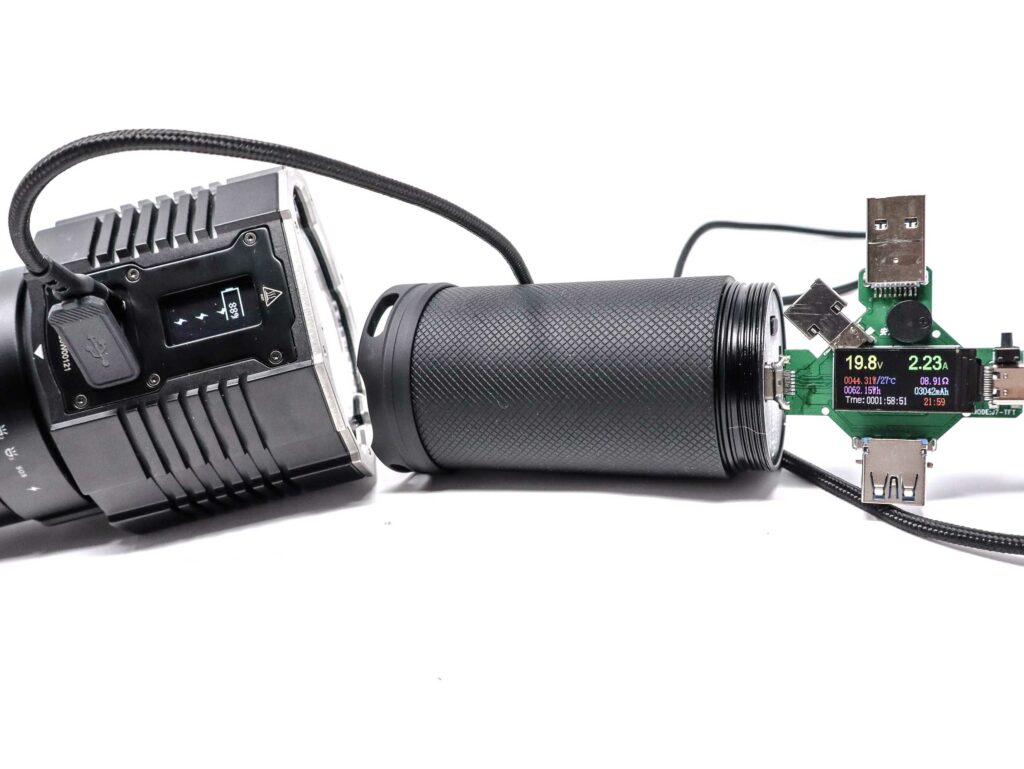
Performance test
Lumen measurements
How Lumens are Measured: Understanding ANSI FL1 Standards How Lumens are Measured: Understanding ANSI FL1 Standards: The ANSI FL1 standards specify that output in lumens should be measured 30 seconds after turning on, as this is the standardized time for measuring brightness according to the industry standard. This is why we focus on this part in our measurements. The ANSI FL1 standards require an ambient temperature of 22 ± 3°C. We record the ambient the ambient temperature to identify potential reasons for any observed discrepancies.Lumens are measured in my home made 50 cm integrating sphere. I use a Digi-Sense 20250-00 data logging luxmeter, and the sphere has been calibrated with a Convoy S2+ measured to 260 Lumens and other lights of known output. The output figures are within 10% of actual. No current measurements this time due to the isolated current path. Measurements were taken using the fully charged 4800 mAh battery pack.
| Mode | Specs | @turn on | @30 sec | @10 minutes |
|---|---|---|---|---|
| Eco | 90 | 87 lm | 87 lm | – |
| Low | 1000 | 898 lm | 898 lm | – |
| Medium | 5000 | 4501 lm | 4477 lm | 1599 lm |
| High | 10,000 | 9225 lm | 9102 lm | 1968 lm |
| Turbo (Momentary) | 15,000 | 14,268 lm | 14,022 lm | 2214 lm |
Parasitic drain: N/A couldn’t measure
NEXTORCH Saint Torch 30C Battery Life: Runtime graphs
How Runtimes are Measured: Understanding ANSI FL1 Standards About ANSI FL1 runtime standards: The runtime is measured until the light drops to 10% of its initial output (30 seconds after turning on). This does not mean that the flashlight is not usable anymore. The last column shows how long the light actually works till it shuts off. If there is a + symbol, it means that the test was stopped at that particular point, but the light was actually still running. This happens on certain occasions, with certain drivers, firmware, or batteries.Lumens are measured in my home made 50 cm integrating sphere. I use a Digi-Sense 20250-00 data logging luxmeter, and the sphere has been calibrated with a Convoy S2+ measured to 260 Lumens and other lights of known output. I use a Digi-Sense 20250-92 data logging thermocouple for the temperature measurements. The probe is affixed to the head using kapton tape and uses the same 5 second sampling rate for logging. The battery pack was fully charged and I tested Turbo, High, Medium modes..
| Mode | Specified runtime | Measured runtime ANSI | Time till shut off |
|---|---|---|---|
| Medium | 3h 45m | 4h | 4h |
| High | 2h 45m | 3h 6m | 3h 6m |
| Turbo | – | 2h 49m | 2h 49m |
DIsclaimer: I had a rough time with these runtimes. The proximity sensor is a pain to manage since if you accidentally turn the light off, you need to deactivate it over again. Also, since Strobe comes after Eco mode, you get blinded every time you cycle through the mode group. Fun times.
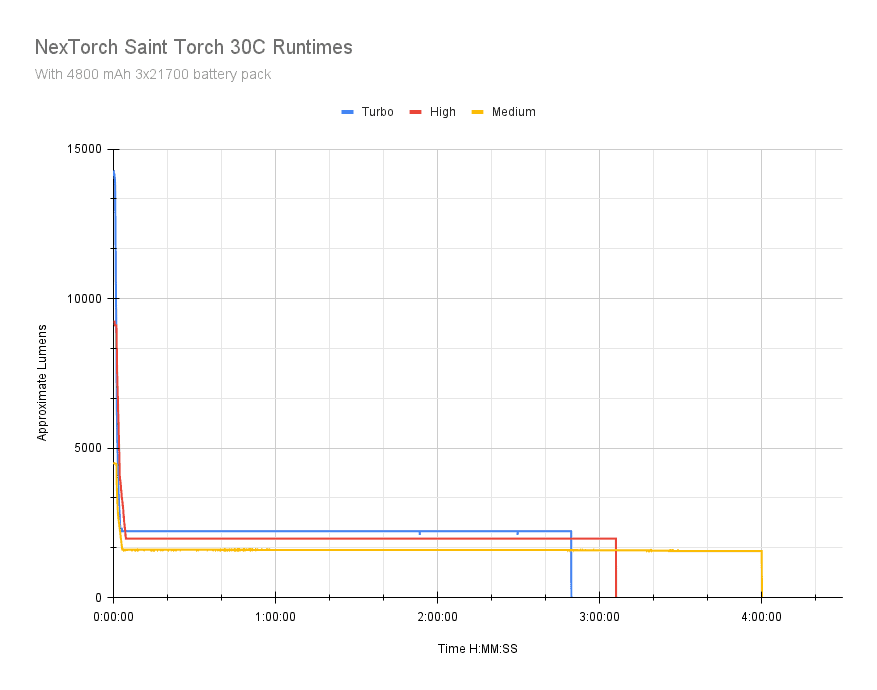
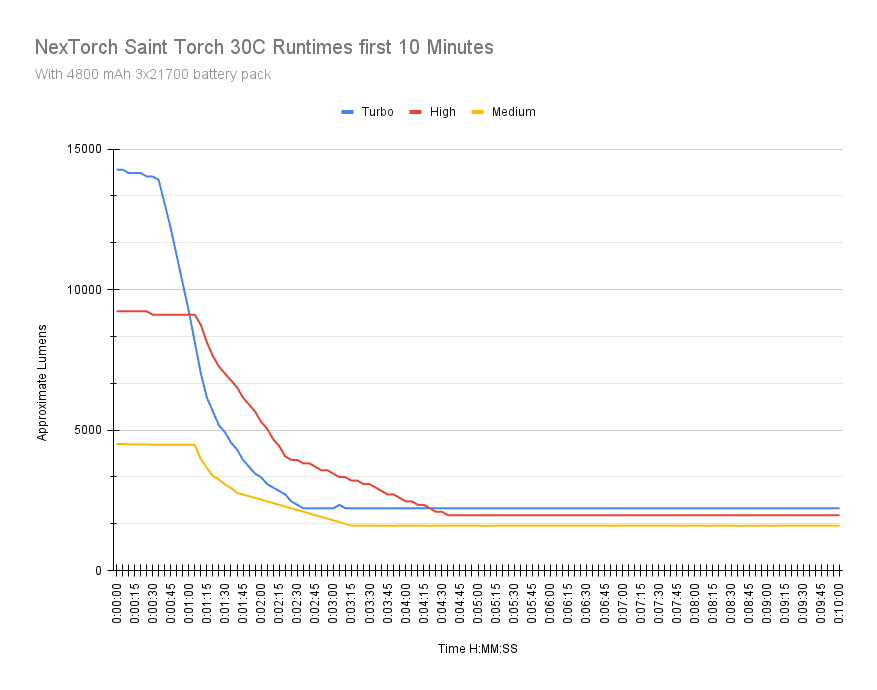
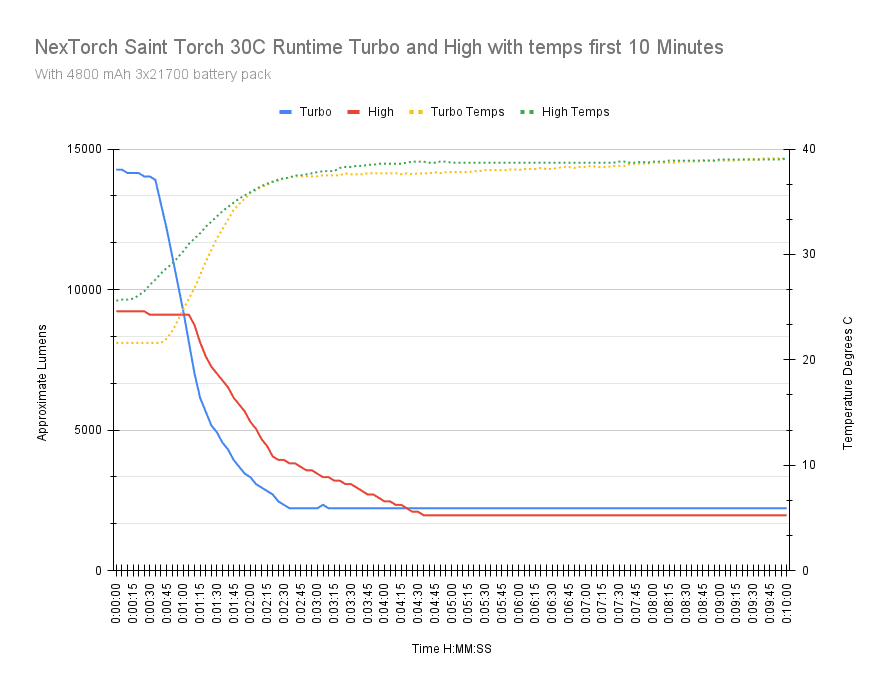
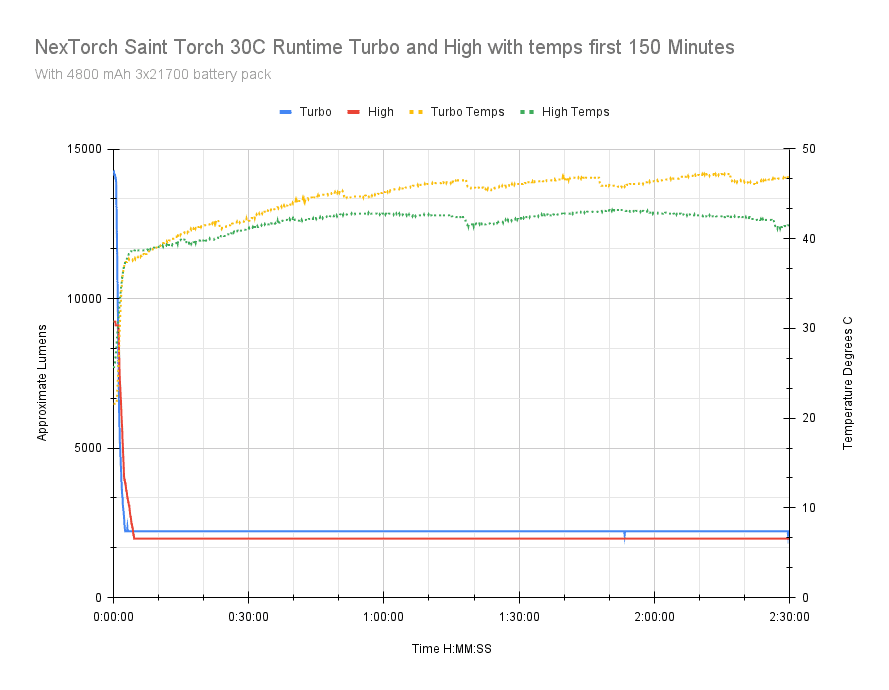
Since the Turbo functionality is momentary, and the switch doesn’t allow continuous use unless you hold it down, NEXTORCH doesn’t list runtime specs for it. Don’t worry, though I tested it of course by stretching a stout rubber band over the tube and doubling it up over the One Step Turbo switch to keep pressure on it during the test. For output, every mode tested is nice and laminar with uninterrupted output after the Turbo and High mode step downs.
Turbo gets you over 10,000 Lumens for about 60 seconds, maintaining over 2000 Lumens until shut down. High gets you about 9,000 Lumens for about a minute, then steps down to about 2000 Lumens until shut down. While these figures are nothing to thumb your nose at, it’s a bit low for this class of light, with all the serious competitors maintaining much higher output on Turbo and High modes.
Thermals is where the Saint Torch gains ground, as they were kept well in check, never going over 50 C, which is great and the light is still hand-friendly the entirety of the runtimes. The shut downs are pretty abrupt with no warning other than the blinking side LEDs.The battery was discharged until LVP built into the BMS cuts the output, with the pack showing millivolts at the end of the runtimes.
Compare to some other high power flashlights:
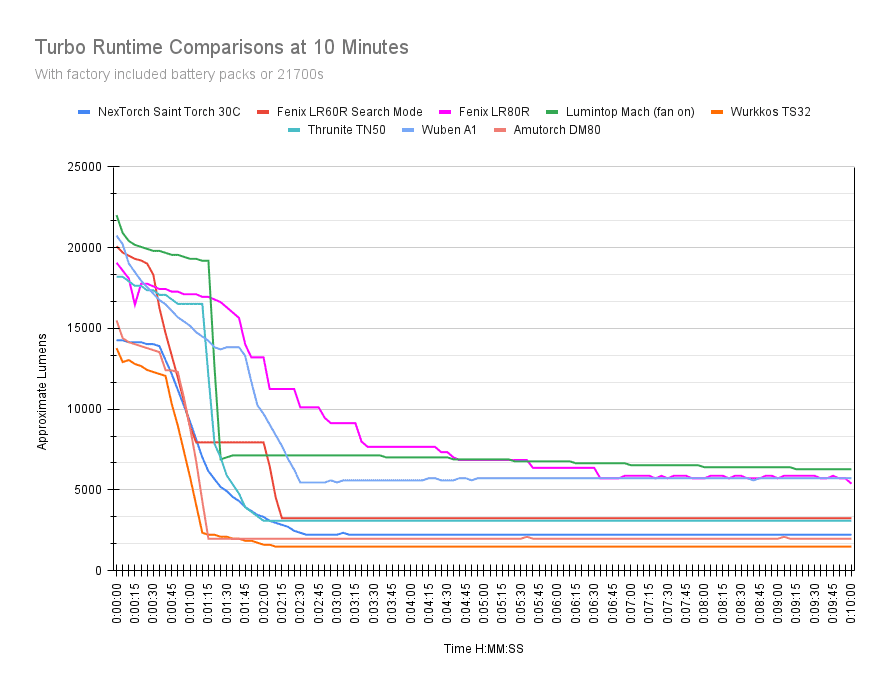
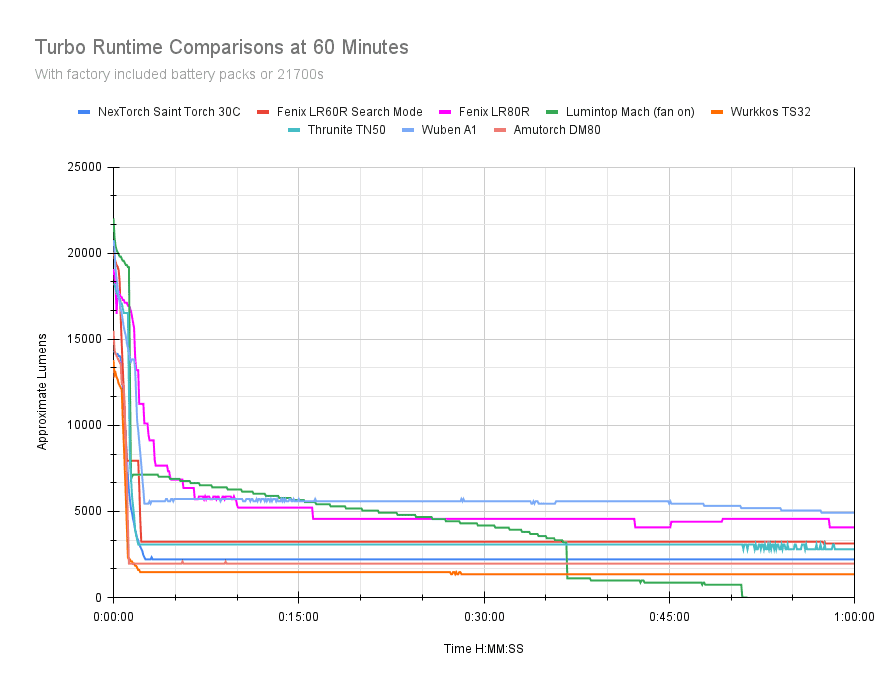
Peak beam intensity and beam distance measurements
About Peak beam intensity: Understanding ANSI FL1 Standards About peak beam intensity The calculated value of distance in meters at which the flashlight produces a light intensity of 0.25 lux. (0.25 lux is about the brightness of a full moon shining on an object). This means that the intensity has decreased so much, it becomes difficult to see darker objects, or objects that don’t reflect light. The columns ‘Meters’ and ‘Yards’ use rounded numbers.Beam distances are measured using a Uni-T UT383S luxmeter measured indoors at 5 meters with the fully charged battery pack. Measurements taken at 30 seconds.
| Mode | Specs | Candela measured | Meters | Yards |
|---|---|---|---|---|
| Eco | 306 cd | 500 cd | 45 m | 49 yd |
| Low | 4556 cd | 5275 cd | 145 m | 158 yd |
| Medium | 21,025 cd | 25,725 cd | 321 m | 351 yd |
| High | 43,056 cd | 46,975 cd | 433 m | 473 yd |
| Turbo | 66,306 cd | 79,000 cd | 562 m | 615 yd |
No issues with the beam distance here, coming in a bit higher than NEXTORCH’s figures. 560 meters from these big LEDs is nothing to scoff at. There’s plenty of distance for near line of sight searching with the unaided eye. If you need more throw, grab a thrower.
Beamshots
Camera settings and distance: Photos taken with a Canon EOS R100 with a Canon 18-45mm lens. The camera is set to ISO 1600, 0.3s, f5 and 5000K WB. The fence is 40 meters distant.
Beamshots of the following flashlights compared:
- NEXTORCH Saint Torch 30C
- Fenix LR60R flood+spot mode
- Fenix LR80R
- Thrunite TN50
- Amutorch DM80
- Wurkkos TS32 flood+spot mode
- Lumintio Thanos 23 flood+spot mode
- Lumintop Mach
Please note that the following beamshots are mainly intended to showcase the beam pattern and beam quality, rather than overall performance. These images are typically taken directly after activation, and in different seasons or weather conditions, and therefore do not fully represent its overall performance. For accurate performance metrics, such as output, beam distance, and runtimes, you need to look at the performance section of this review.
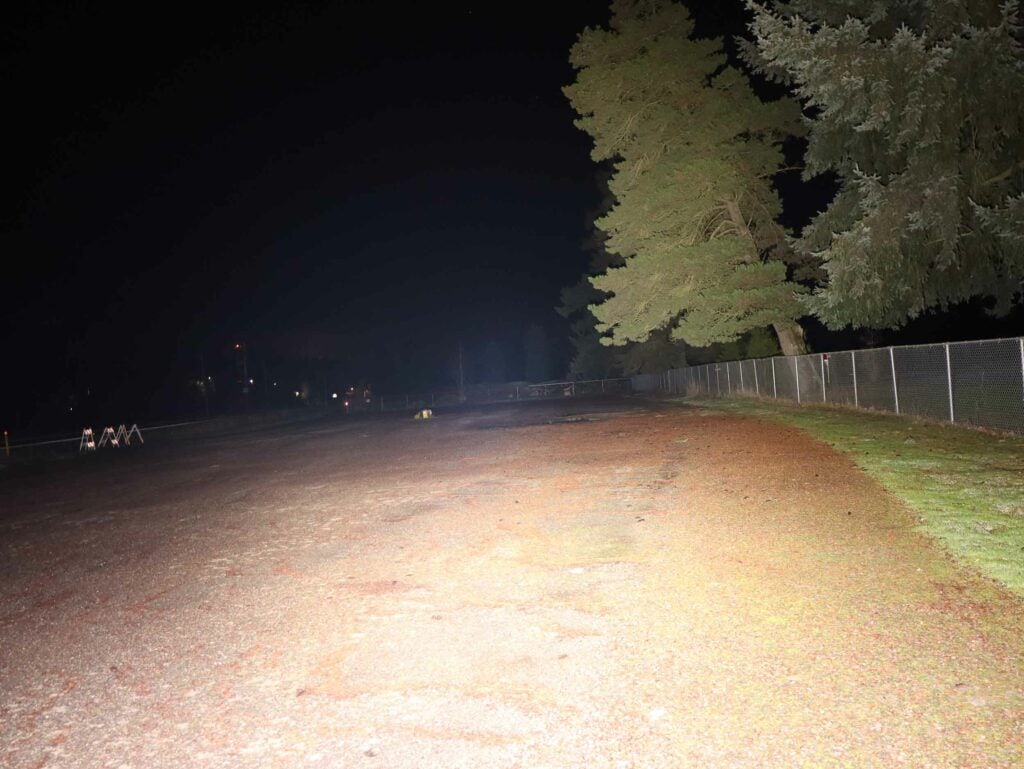
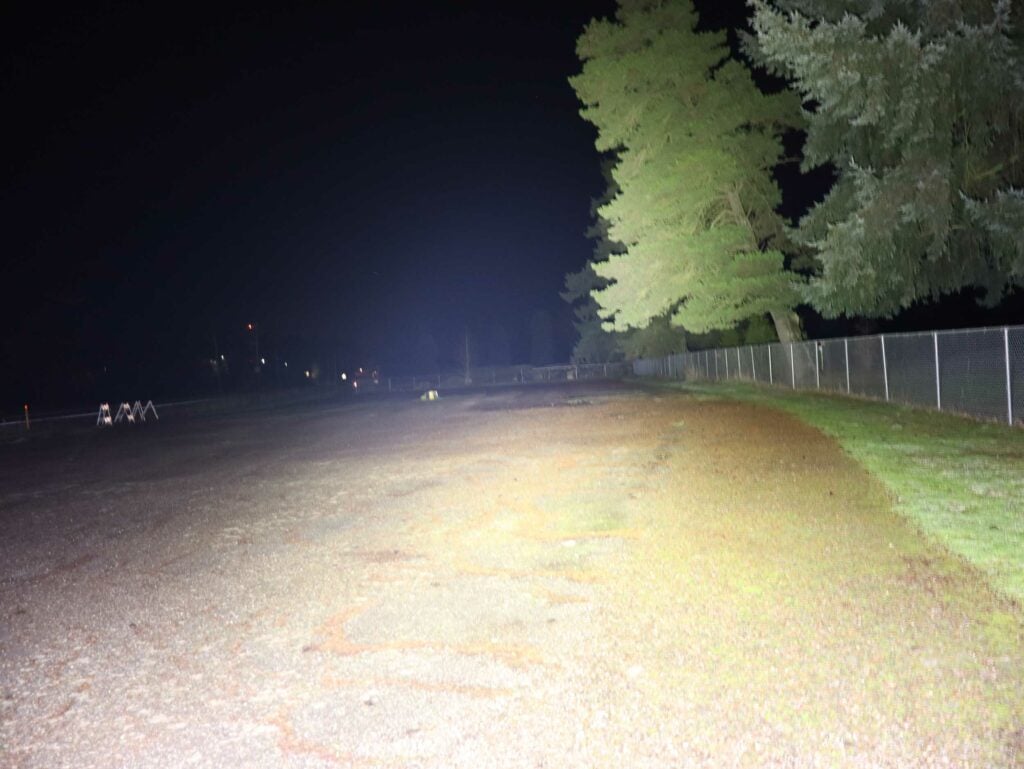
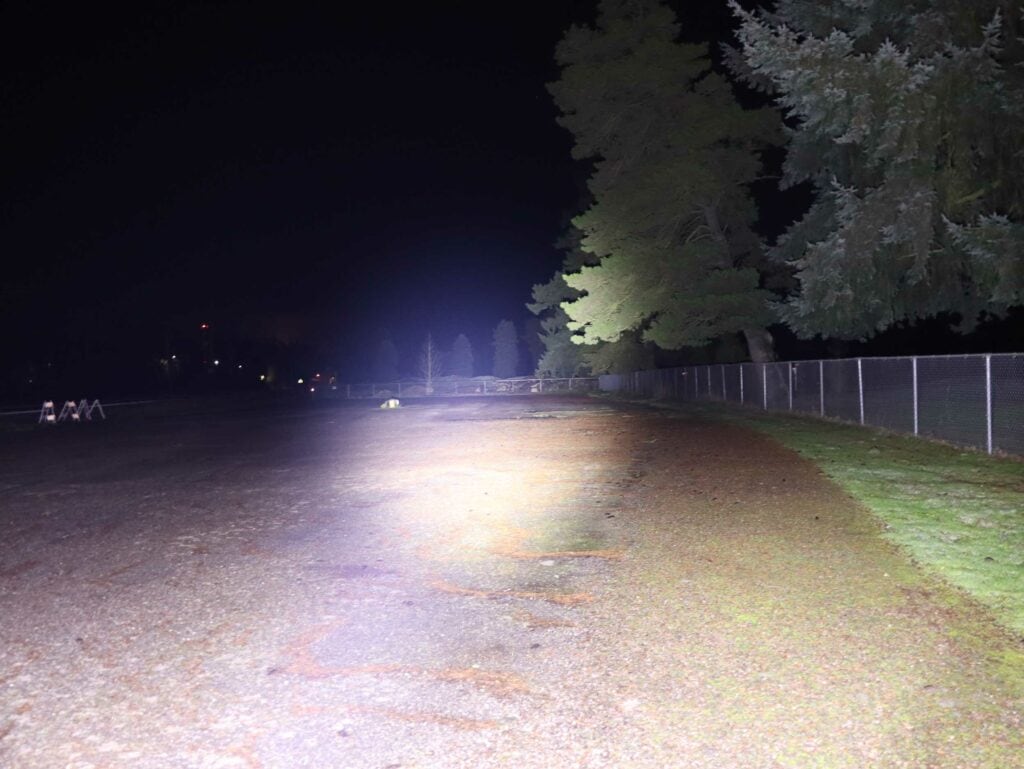
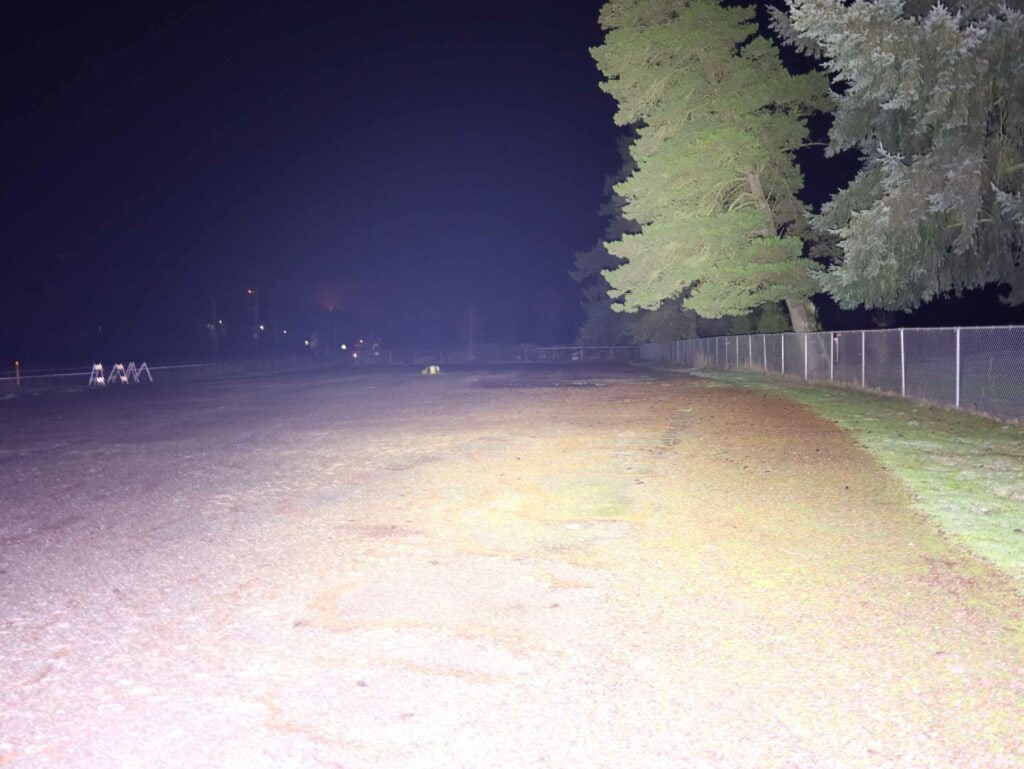
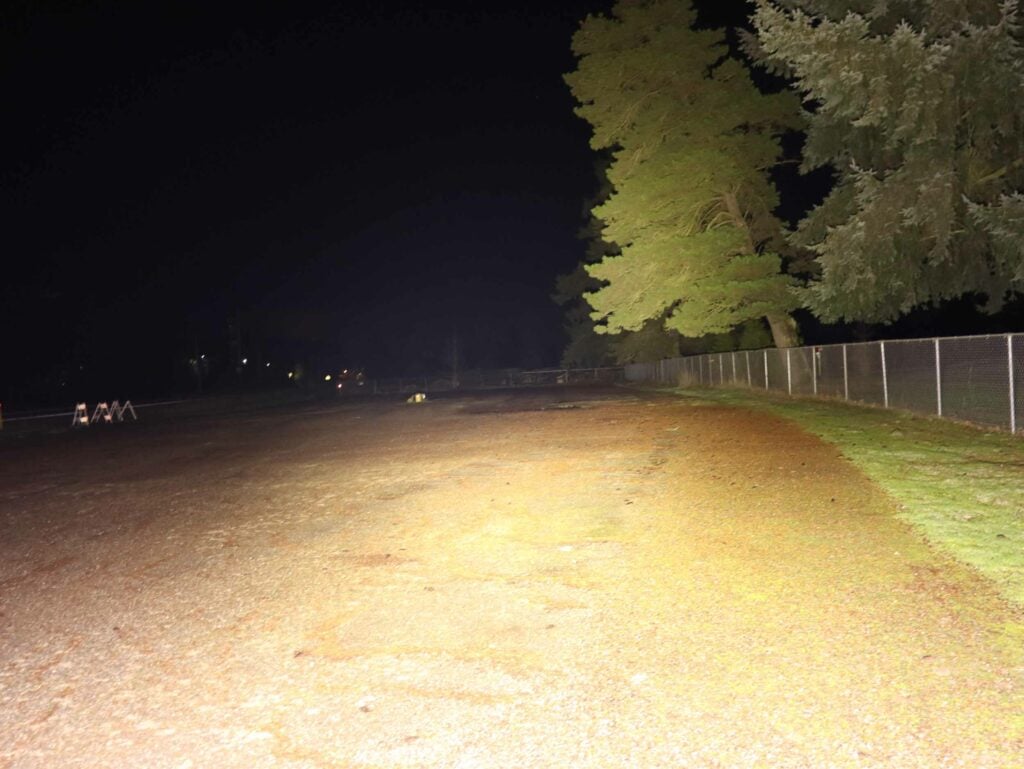
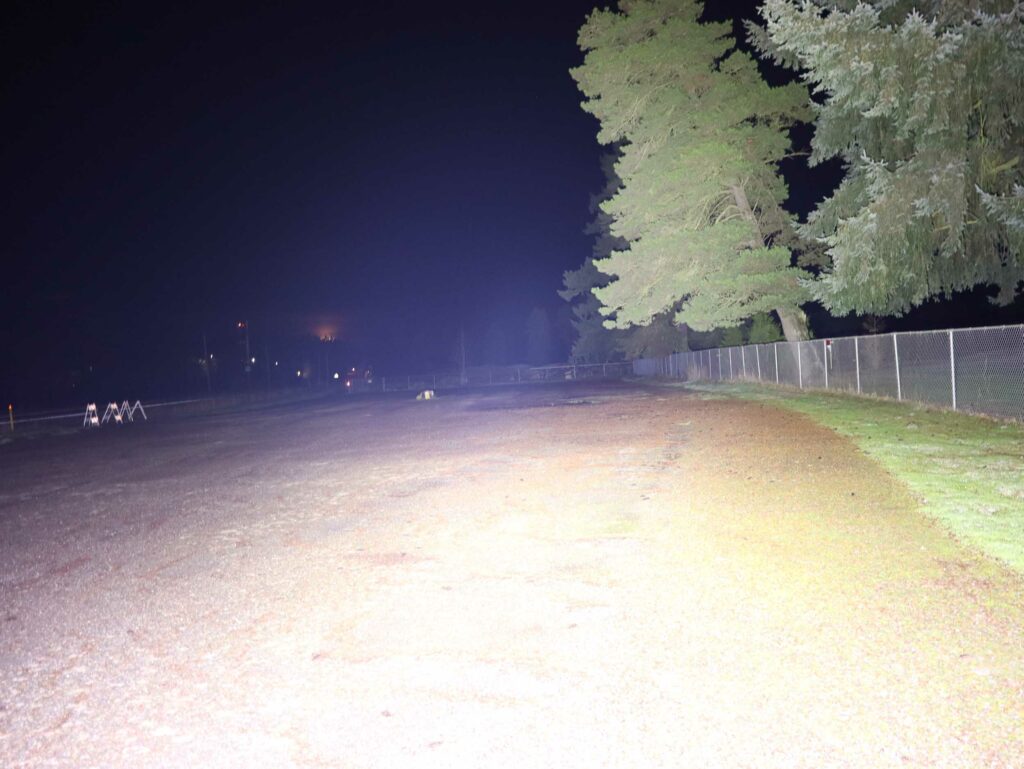
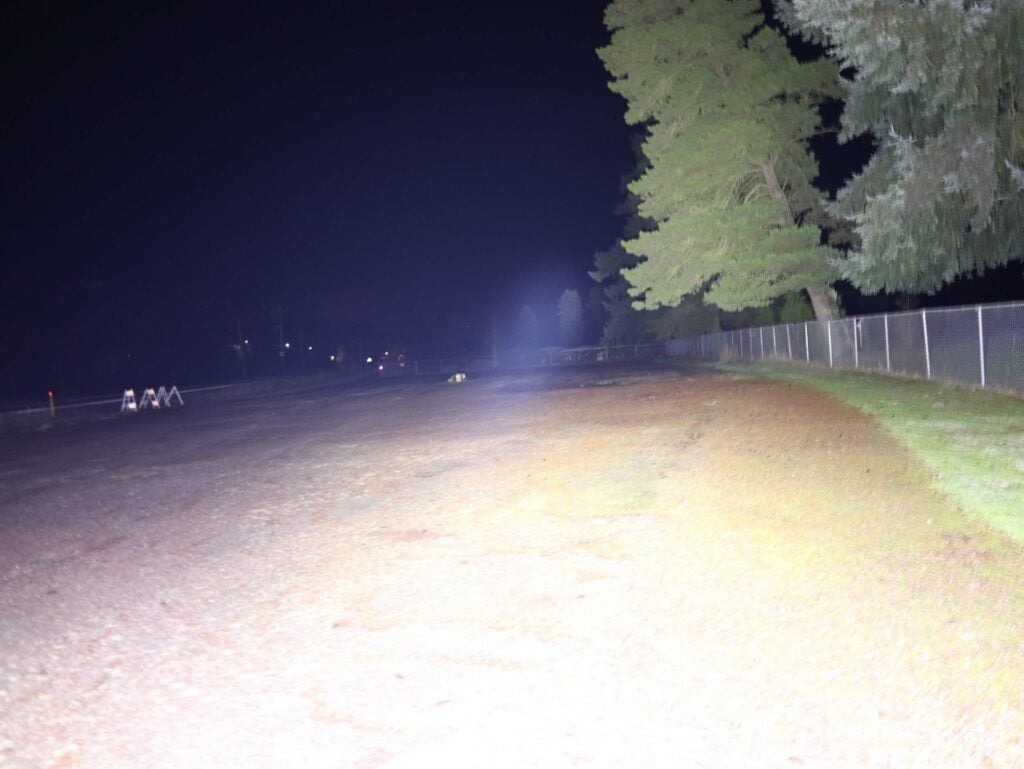
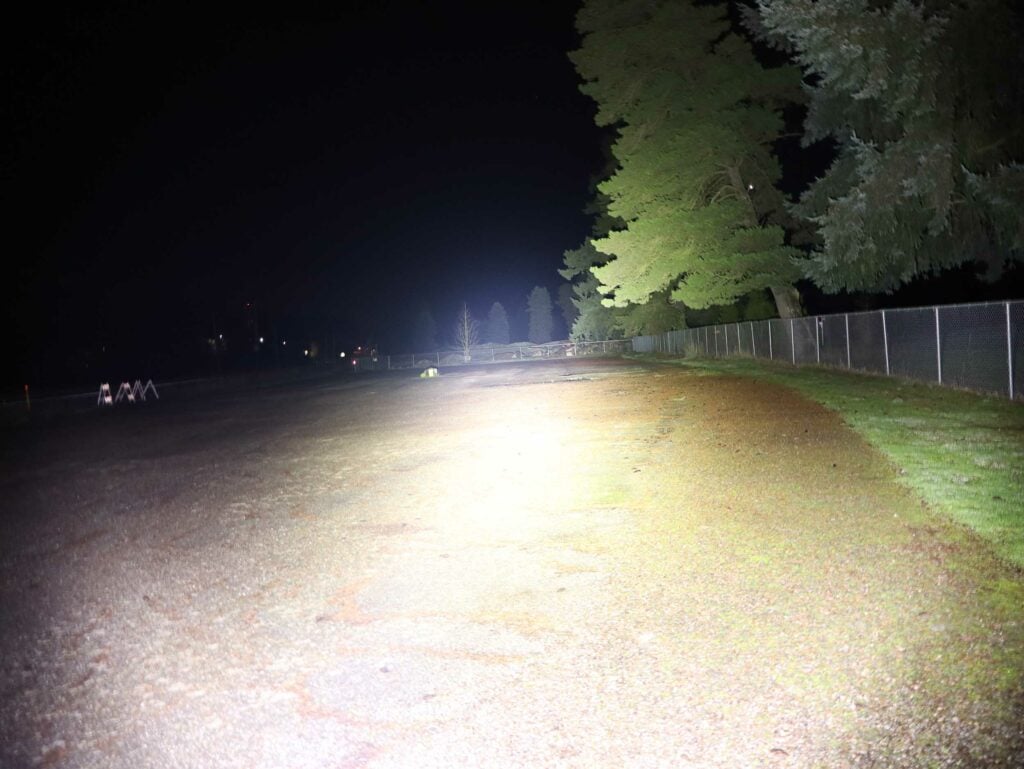
Disclaimer: This flashlight was sent to us for review at no cost by NEXTORCH. We have not been paid to review, nor have we been holding back on problems or defects.
Final Verdict
Pros
- Excellent build quality, fit and finish
- Fully regulated output
- Easy to handle
- Relatively lightweight
- Nice beam
- 45W bidirectional charging
Cons
- Strobe part of main mode group
- Always starts on High
- No mode memory
- Sustained output is not that great
Explanation on star ratings:
1: Avoid: a match would be a better choice – 2: Poor: significant defect or issues; almost unusable – 3: Average: some defects or issues; but still usable 4: Good: recommended (minor issues) – 5: Great: highly recommended

4 stars: ★★★★
While our star rating provides a reliable indicator, we encourage you to read the full review to make an informed decision based on your own needs and preferences.
My first NEXTORCH review in the books. Overall, I’m pretty impressed. I did have a bit of a hard time sorting the runtime tests, but that’s another issue, and doesn’t detract too much from the overall impression of the Saint Torch 30C. Dave previously reviewed the flagship Saint Torch with 20,000 Lumens, and I think this one is a good smaller alternative.
The great build quality, grippy durable finish, easy handling, relative lightweight, and overall usefulness were impressive here and represented a nice departure from the heavy, bulky competitors without skimping on features like 45W bidirectional charging and a fully regulated driver. I liked the flower-style head and design also.
The beam was nice and versatile also, and despite having a small-ish battery capacity, the runtimes weren’t bad at all. The output tracked close to the factory spec as well. I like how NEXTORCH used some unknown LEDs here, and I never expected to see these LEDs in a high-end flashlight, but it works.
Misses for the Saint Torch 30C? The limitations of the lighter weight and lower thermal mass necessitates lower sustained output than some of the competitors, which in this class really matters. In addition, the UI, while not a deal-breaker given the application, needs some tweaking to make it great. The method for disabling the proximity sensor is also cumbersome, and it’s a one-time use affair since it re-activates when turned off. I get it’s a safety feature, but it’s intrusive.
Other than those issues, I can’t really fault the NEXTORCH Saint Torch 30C. It’s a solid smaller searchlight that doesn’t give up too much in output or features compared to its larger competitors. 4 stars for the Saint Torch 30C.
Buy your NEXTORCH Saint Torch 30C with a discount
Get 10% off at NEXTORCH using our exclusive discount code: 1lumen10
1lumen selects and reviews products personally. We may earn affiliate commissions through our links, which help support our testing.